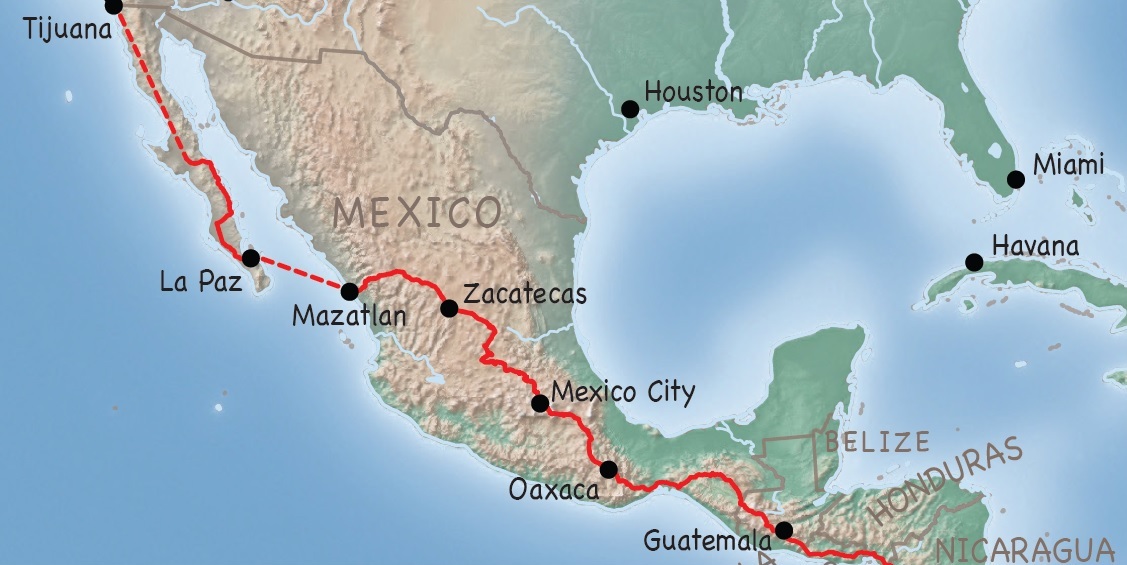| Start Page | 1) Ecuador | 2) Peru | 3) Bolivia | 4) Chile & Argentina | 5) Colombia | 6) Central America | 7) Mexico | 8) U.S.A. | 9) Canada |  |
| Start Page | 1) Ecuador | 2) Peru | 3) Bolivia | 4) Chile & Argentina | 5) Colombia | 6) Central America | 7) Mexico | 8) U.S.A. | 9) Canada |  |
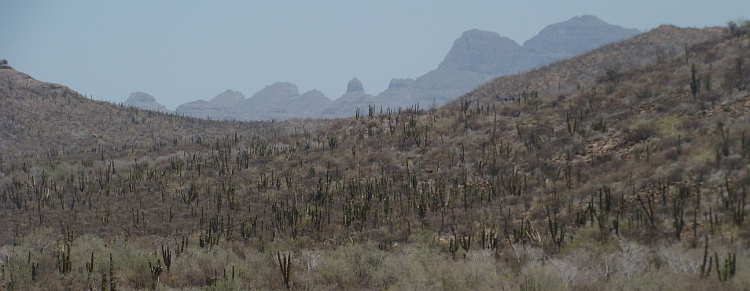
|
And then Mexico laid before my wheels. A continent in its own right. From the
tropical rainforests in the southern regions Yucatán and Chiapas to
the scorching deserts in the northern regions of Sonora and Baja California
I would find a country with a fascinating history in which the aesthetic and
spiritual Mayans, the warriors of the Aztecs and the gold-hungry Spaniards left
the most visible imprints.
A spectacular attraction in southern Mexico is the Cañón El Sumidero,
where a deep gorge cuts the plateau into two pieces. A wide river lies between
the rock walls. With a boat I entered the canyon. The cliffs rose to several
hundred meters in height above the river. Along the banks lived thousands of
black vultures. The prey was made readily available by the crocodiles, which were
bellying after their meal at the waterfront. The vultures were allowed to divide
the leftovers. The division of the prey was not a democratic process. No
discussion came to pass and there were no formal decisions. The vultures did not
live on the basis of communist principles either; they did not divide according
to fair share. The distribution of the loot took place under the laws of
capitalism. The rules were equal for everyone: everything was allowed. That
creates clarity in the micro society of the the vultures. An empathic, generous
inclination meant hunger. Features like brutality and stinginess were obviously
considerably more handy. It was common practice to deliver mean and malicious
pranks. The result of all this should be food for thought. Despite abundant
food not all the vultures were able to eat enough. Those who did get enough,
could not enjoy the food too in the rush and stress of the hassle. Not only the
hungry, but also the gluttons had a disgruntled look. From this little
allegorical drama we might conclude that capitalism is not good for your karma.
Hunger, physical pain, jealousy, greed, envy, fear and mistrust, the life of the
vulture knew many costs and few benefits.
The trajectory was tough. The ridges were high enough for a few
hours of climbing but too low to experience any cooling on top. The
more because a climb would be followed with a descent. I went through a
fascinating landscape. Thousands of slim cacti rose meters high into the sky and
complete hills were populated with these cacti. Cities were lacking in this part
of Mexico. There were only a few settlements. There were regular stalls however,
where I could buy water or food. Especially for the replenishment of water
resources these stalls were vital. On a day, I lost many liters of sweat
and the moisture deficits had to be replenished in time.
Oaxaca is a beautiful colonial city and is also the center for Mexican
traditional Indian clothing and jewelry. And it is the city of the moles. Simply
stated, the mole is the Mexican version of curry. So there are 'green', 'yellow',
'Red' and 'colored' moles. Internationally, the best known is the guacamole,
but in Mexico itself the Mole Poblano was the most popular, a spicy, black sauce
with chocolate and spices. Not only in Oaxaca but in every region of Mexico there
was a wide range of great food available. Mexican cuisine is one of the top
cuisines of the world. The food is based on the tortillas: pancakes of flour or corn, which you can cut,
fold, roll up, dab in a soup or in a sauce, fill up with meat, fish, cheese,
beans or vegetables. Depending on what you do with it, tortillas are also known
as tacos, burritos, enchiladas, chilaquiles, quesadillas or enfrijoladas.
I cycled across new highlands to Puebla, the conservative heart of Mexico
with the largest cathedral in the country. The visit of Pope John Paul II
in the eighties was still regarded as legendary. Successor Benedict XVI had
recently summoned not to use contraceptives, but to follow the path of
contemplation instead. A very dangerous statement for a country like Mexico,
where the fast-growing population caused a complete disruption of the
traditional countryside in the eighties. Dozens of millions of people were
driven to the slums of the big cities back then. A single trip to abject poverty.
The Mexicans loved their pope, but fortunately they sticked to their own plan.
Everywhere you could buy contraceptives and the Mexicans were actively exercising
birth control.
From Puebla a beautiful dirt road climbed up to the pass between the
two major Mexican volcanoes. The Iztaccihuatl is a dormant volcano. The
Popocatépetl in contrast was extremely active. The volcano turned out
to be active right at the moment when I was cycling to the immense cone of the
volcano. Heavy ashfall withdrew the Popo from sight. Only a few kilometers
from the crater the contours of the volcano were visible. Only now I could see
how the smoke rose kilometers high into the atmosphere. The volcano was rumbling
from inside. At times a deep, earthy grunt escaped from the crater, as if a
Death Metal singer was practicing the growl vocals. I had not seen a living soul
for hours. Could it be that the road was supposed to be released from traffic?
Was it safe? Through the ghostly, gray, volcanic ash-laden sky I cycled further.
The ash particles were razor sharp. It felt like small razor blades in my eyes.
After the long climb I reached the Paso de Cortés, just above the tree
line. The landscape was gray with thick layers of ash. The Spanish conquistador
Hernßn Cortés arrived here in 1519 and looked out over the plains of
Mexico City, at the time the location of the capital of the mighty Aztecs.
Aztec leader Montezuma thought that Hernßn Cortés was the mythical
god Quetzalcoatl. As a result of this misunderstanding the Spaniards
could walk into the town without a struggle. They made use of the opportunity to
capture the Aztec Leader. The resulting war was won by the Spaniards. The Aztecs
were defeated and the Vice Kingdom of New Spain was a fact.
After a short break with Margarita in Mexico City and Yucatßn I could
focus again on why I was on the continent in the first place. Cycling. I was
able to find a way out of Mexico City relatively easy. The metropolis is
the second largest city in the world according to statistics - only Tokyo
would have more inhabitants. Mexico City felt not as big as some other major
world cities, though. It was a surprisingly livable city with cozy neighborhoods
and interesting museums. On a regular basis, creative events were being
organized, including a free concert by Paul McCartney at the Zócalo, the
main town square. Another initiative took place on Mother's Day. A large square
was completely covered with vases with flowers. All the men were allowed to
ick up these vases for their loved ones.
The traffic was well-organized in Mexico City. The subway was cheap and
efficient. The road pattern was laid out smartly. On the main arteries
were only a few places where you could switch to the side roads. To actually
turn to the left or right, you had to be on such a side road. This system made
sure that there was hardly any congestion and within two hours I was able to
cycle from the very center to outside of the city.
Central Mexico is the region of the Silver Cities. At the time of the Spanish
domination silver mines were a huge source of income for the Spanish motherland.
Miguel Hidalgo had no choice but to battle openly for freedom. A year after
the failed conspiracy his men won the battle of Mexico City. The success was
short-lived though. In a subsequent battle two months later, he was imprisoned
and executed.It would ultimately take until 1821 that Mexico, after a mad
tombola of intrigues and entanglements, conquered its independence.
Via San Miguel de Allende I cycled to Guanajuato, a beautiful city in a narrow
valley. Brightly colored houses were stuck against the steep slope. The art
was omnipresent: in churches, in homes and on the streets. More bohemian a city
cannot be. Everyone was an artist. The town lived and roared in a festival
without beginning and without end. An artistic party where a discussion
would not be about FC Barcelona and Real Madrid, but about Dostoevsky and
Tolstoy.
Mexico has a poor safety record as a result of the drug wars between different
gangs. In the easy chair in front of the television it seems as if the whole world
is in fire. The Latin American countries usually only reach the newspapers when
it comes to drugs, political instability or slums. Travelling on the bike I saw
a different reality. The people seemed friendly and amicable.
Most Mexicans live in cities and have a more modern attitude to life than
residents of most other regions of Latin America. Beside, Mexicans are family
people. Mexico is not a stressed, individualistic performance society. The key
word is tranquilo, which in these parts has an almost spiritual connotation.
Security was not an issue in Mexico and that held actually true for almost all
of Latin America. As a bicycle traveler I was vulnerable to robbery or theft,
but after twenty thousand kilometers of cycling in largely poor areas, I had not
experienced any incidents, except for one robbery. And even under these
dangerous circumstances, there were people who helped me out. Most Latinos and
Latinas were jovial, friendly people who tried to make the best of their lives.
I had an impressive list of amigos on Facebook by now, which were actively
following my Camino and privided the photos of meaningful or less meaningful
comments. People who have made a long bicycle trip in Latin America or elsewhere
on our planet, will agree that we live in a friendly world.
After the Mexican independence in 1821, not much changed in Mexico.
A series of unstable governments did not deliver significant improvements.
At the end of the nineteenth century, General Porfirio Díaz was the strong
man of the country. Under his government Mexico made great economic steps
forward, but only the elite benefited. After being almost continually in power
for a period of thirty years, he decided to launch elections in 1910. It would
To the northwest, the landscape gradually became drier and more wide-spaced.
The nearly two hundred kilometers from San Luis Potosí to Zacatecas was
a straight line through the desert. I cycled through a panoramic landscape with
lonely ridges and cacti of all shapes and sizes. Loneliness prevailed sovereign
in the empty landscape. The wind had free rein and in the afternoon there were
whirlwinds on the plateau. It was important to avoid the dust devils. The
whirlwinds could not only bewilder my hair seriously, they could also throw
a Lonely Cyclist from his bike easily. Once I was too late to avoid a whirlwind.
I could stop only just in time and steady myself. One or two seconds I was in
the spin. I was completely sandblasted. Or rather, gravelblasted. Gravel, shrub
branches and broken glass were part of the whirlwind and were launched like
projectiles into my skin.
The traveling life on the bike still suited me well. Every minute
I experienced as a journey of discovery. Which view would await behind the next
corner? Who would I meet in the next inn? What would be beyond the horizon? I
had headed the majority of my days on the highway of life, on the main route
that most of us follow. I found satisfaction in work, but what had I learned of
the world and of myself? Swallowed up in the everyday life I missed the
attention to see the beauty of the world, to really experience the miracle of
life. I had to abandon the highway of life to feel the meaning of my existence.
The paradox was that the rambling life on the road gave direction to my life.
Cycling in a strange world I had to do it myself. Alone. On my own. Nobody to
help me, I could blame no one but myself. Thoughts drifted past like the clouds,
in ever new shapes, sometimes quietly rippling, sometimes as in a storm, to
eventually dissolve in the infinite space that is around. Alone with my thoughts
I was constantly confronted with my own imperfection. It proved an excellent
way to be in peace with the imperfection of the world. It was a miracle: when
I was on the bike, life seemed to be nicer, fuller. I was slow enough to be able
to sense the world deep enough to smell her, feel and taste her. To experience.
Freed from the closed environments of automobiles and office buildings I felt
part of a much larger world around me. And that world proved infinitely
interesting. I traveled through ever-changing landscapes, passed numerous
villages and towns. I met people from all walks of life, people that I would
otherwise never learn to know. People with very different lifestyles or way of
lives. All people had their own story, their own experiences and all those
people were trying to do something special with their lives. There turned that
there was so much beauty to be found on the world, even in places where I was
not expecting it. Paradise exists and it has been there all the time.
In the long, lonely stretches of the Mexican plateau, I was always well
accompanied by music in my head. I usually had little to say about the
fruits in the musical fruit basket. It was like a jukebox where you do not have
to throw in coins, but I had no choice in the record which was playing either.
One day a famous Dutch singer was playing in repeat mode:
The Mexican desert was not only the country of mediocre Dutch singers, it was
also the site of shamans and diableros - wizards. Plants like peyote and
devils weed have strong hallucinogenic properties and can launch the spirit and
the soul in another state and perception and even in another physical reality.
In the book 'The Lessons of Don Juan' the American Carlos Castañeda revealed
this world of shamanic Mexico. However, even without using the hallucinogenic
plants it was easily conceivable that a crow on the cactus was not just a crow,
but that the crow also could be a diablero who had assumed the form of a
crow. Whether the iguana that was slipping between the stones was not an iguana
but a wandering soul. Once you get in that way of thinking, nothing is
what it seems and everything is floating, like the surrounding landscape is
floating in the heat and is deprived of its perspective. Life is thriving under
simplicity and I decided to take things so as they come. And so from now on a
stone was a stone, a cactus a cactus and a crow a crow. Nothing more and
nothing less.
Yet not everything was normal though. I was plagued by a series of
mysterious punctures. Each time the culprit turned out to be a minuscule
piece of iron wire. On the descent along the spectacular cliffs of
the Espinazo del Diablo - the Backbone of the Devil - it was a grand party of
punctures again. After another series of punctures the tire was damaged so much
that a tear in the tire itself appeared to be the cause of new flats. It was time
for a tire change and I exchanged it for a spare tire. Without further problems
I went down to Mazatlán along the Pacific Ocean.
From Mazatlán I traveled by ferry to Baja California, the peninsula that
like a worm-like appendage hangs to the northwestern tip of Mexico. Baja
California is not just a peninsula; it is a particularly long peninsula. From
La Paz in the south to Tijuana in the north lie 1,500 straight kilometers of
asphalt in the desert.
It was summer. That was surely not the best time of the year to traverse Baja
California by bike. A long ridge separates the western half from the peninsula's
eastern. The west has got a significant cooling effect of the Pacific Ocean.
Here, the temperature was no higher than thirty to thirty-five degrees Celsius.
A good cycling temperarure. After two hundred kilometers of cycling I crossed
the ridge crossed to the eastern side. And that was a whole different affair.
It was fifty degrees in the shade and the asphalt had become syrupy.
The swampy tarmac sucked into the tires and promptly I had a leak. In the
full sun I had to change my inner tube. This was burning hot from the friction
heat. When inspecting the tube I found out that the patch from one of the old
punctures had released. That was strange. It had never happened to me before,
that the patch came loose. Quickly I changed the tire for a spare one. It was
important not to remain more time than necessary in this scorching heat.
After two kilometers descent I had a leak once again. I had no spare tires
at my disposal anymore and I had to repair one of the punctures. Once again
there was no protection against the sun. I had not seen any trees at all in the
last hundred kilometers and so there was not any shadow either. The sun was
directly overhead and there was no wind. The rubber of the tire was extremely
hot, so I could not touch the tire longer than a fraction of a second. With
a lot of diffuculty I was able to remove the tire from the wheel. I saw that
once again a patch of an old flat tire had been released. In good spirits, I went
to work; in the last few weeks I was unfortunately to be able to gain a lot of
experience in the noble art of fixing flat tires. I confirmed the glue, waited
patiently and put the patch on. However, the glue remained fluid and the patch
came loose. I tried it again. And again. With more and longer breaks between the
confirmation of the adhesive and the affixing of the patch. I tried a third
patch and a fourth. And a fifth and a sixth. But it did not work out. Was there
a diablero at work? I was really nervousby now. Another time I tried. And again
the patch came loose. I observed that the problem was much bigger. At various
places old patches had released. Slowly, too slowly, it dawned on me that it
might be so hot that the glue 'melted'. The old glue performed well in the
extreme heat, but all patches with the new adhesive in Nicaragua did not
function in the extreme circumstances.
Now I had a real problem. I was thirty kilometers away from my destination,
I had seven liters of water that was almost at boiling point, and I had two
tires with dozens of leaks. The two tubes of glue from Nicaragua that I had at
my disposal, would not bring the solution. After sunset, I would probably have
a chance to fix the tires, but I could not wait so long. Presumably I would not
survive the remaining five hours until sunset with my limited water supply. I
had water for at most two to three hours. It was not an option to walk with the
bicycle to bridge the remaining thirty kilometers. That would take too much
time. It dawned on me that I found myself in an acute emergency. There was
nothing else to do than to hitchhike the last thirty kilometers. After half an
hour a car stopped and I was able to load my bike in the trunk. I was lucky that
we were heading to the most touristic town in 1,500 kilometers. In the town of
Loreto was a bike shop. He had glue and he had inner tubes for me as well, but
unfortunately he did not have a 28" casing. Therefore I had to cycle to Ensenada
and Tijuana.
A new uninhabited range of one hundred forty kilometers of scorching desert
separated me from Mulegé. A superb track that partially
followed the jagged coastline and partially the ridges and valleys filled with
towering cacti. After a long climb in the mountains followed by a descent on
scorching hot asphalt I promptly rode a new leak. This time no patch could have
been released. I was riding on one of the fresh tires. It appeared that there
was a mysterious piece of wire in the tire again, which caused the leak in the
tube. I removed the new iron splinter and exchanged the inner tube. Without
further problems I reached the haven of Mulegé, beautifully situated in a
green sea of palm trees and surrounded by bare mountain ridges. Only the old
mission church rose like a kasbah above the sea of palm trees.
The next day I left early from Santa Rosalía and hit the road to
San Ignacio. After a long climb I reached a broad valley dotted with cacti
and against the backdrop of majestic volcanoes. After crossing a
ridge a long trail led through a kilometers wide plain. At the end of
the plain lay a new ridge. After a short climb I went down to the oasis
of San Ignacio. I found myself on the cooler, western side of the mountains.
Thus I had completed the hottest part of the route through Baja California.
The last three days I had drunk 25 liters of water on a daily basis
to compensate for the loss of moisture. To celebrate that I had survived the
sweltering route, I treated myself with fish tacos and coke. After that it was
bedtime.
Just before sleeping I checked routinely whether my tires were still full.
I thought that I was going crazy. The rear tire was not completely full. There
must be a leak. Instead of sleeping, I had to first fix the tire. That was no
problem. However, the cause of the flat tire was more problematic. The tire was
damaged. It had a small tear in the form of a half moon. Exactly the same shape
as the damage in the tube where the leak was. The conclusion must be that the
damaged tire was the cause of the leak in the inner tube. So I needed a new
tire, but I had my last spare tire already in use. What now? For a permanent
solution I needed a new tire. That meant that I had to go back 650 kilometers
to La Paz, at the tip of the peninsula, with the chance that they would not have
a suitable tire for me. Or that I had to cycle 750 kilometers to Ensenada or
850 kilometers to Tijuana. I thought whether it was a good idea to cycle at least
seven hundred and fifty kilometers through the desert with the damaged tire. It
was clear to me that it was totally irresponsible to continue. With the
bus I traveled to Tijuana, on the border with the United States.
Just half a kilometer from the Revo was the border area where it was really
spooky. At night there were drug smugglers and traffickers active, the locals
warned me. Altogether Tijuana was not a pretty, spiritual destiny. That was
confirmed in an Internet cafe. A few bandits came fighting and rolling in and
were fighting between the PCs in the internet cafe. The idealist in me usually
wants to jump in between the parties to mediate. This tendency was completely
subdued in my mind at this very moment though, between these life and death
fighting men. I timidly crept away behind my screen, hoping that they would not
see me. 'No, I'm not here for the moment,' was the message. Besides the grim
side of Tijuana there was fortunately also the pleasant laidback atmosphere
that is so characteristic of Mexico. And the border town knew excellent
restaurants serving fine Mexican, American or Italian dishes.
From the center of Tijuana, I cycled no more than a kilometer to the US
border. I maneuvered my bike between the long line of cars and goy myself in
the equally impressive line of pedestrians. America was the promised land.
The same was true for myself. After having spent more than a year in Latin
America it was good to dive into a new world again. I had never been in the
United States. My image of the country was determined entirely by what I had
heard or seen or read in the media. I was wondering how my experience would
be and how the Americans experienced their own country. When I met the
Polish-American Dorota in Mexico, she gave me a little foretaste. About her
new country, she said:
The long Road. Part 7 of 9: Mexico
In the Mexican Highlands 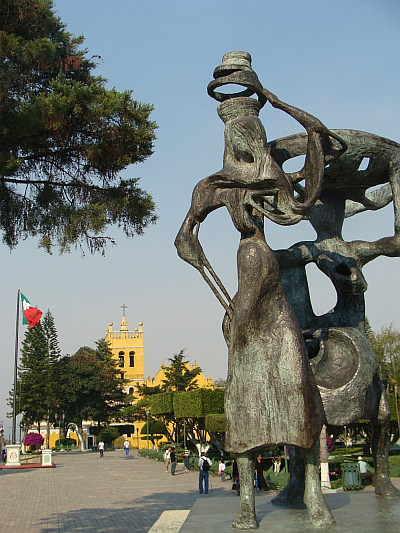 Mexico is a country of traditions, but it is also a modernizing, politically
stable country with a substantial middle class and a good infrastructure.
My discovery of Mexico began in the cool highlands of Chiapas. San Cristóbal
de las Casas was the logical base to explore the area, beautifully situated
in a lush, green valley. I strolled over the cobbled costreets and past
countless colorful churches. San Cristóbal was the most touristy location
since I left Quito two months ago. Despite the tourists the atmosphere was
tranquilo, relaxed. From far and near came residents of the surrounding
indigenous villages to the city to make a little profit of the tourist boom.
The Indian women and the children tried to sell their fare on the markets and
squares. Besides the obvious sombreros there was a wide range of painted wooden
tigers, zebras, turtles and penguins. But above all there was a choice of
jewelery. Many of these ornaments were made of amber from the nearby mines, but
the range of bright shiny plastic bling was perhaps even greater. San
Cristóbal is a paradise for all women who want to shine brighter
than the sun.
Mexico is a country of traditions, but it is also a modernizing, politically
stable country with a substantial middle class and a good infrastructure.
My discovery of Mexico began in the cool highlands of Chiapas. San Cristóbal
de las Casas was the logical base to explore the area, beautifully situated
in a lush, green valley. I strolled over the cobbled costreets and past
countless colorful churches. San Cristóbal was the most touristy location
since I left Quito two months ago. Despite the tourists the atmosphere was
tranquilo, relaxed. From far and near came residents of the surrounding
indigenous villages to the city to make a little profit of the tourist boom.
The Indian women and the children tried to sell their fare on the markets and
squares. Besides the obvious sombreros there was a wide range of painted wooden
tigers, zebras, turtles and penguins. But above all there was a choice of
jewelery. Many of these ornaments were made of amber from the nearby mines, but
the range of bright shiny plastic bling was perhaps even greater. San
Cristóbal is a paradise for all women who want to shine brighter
than the sun.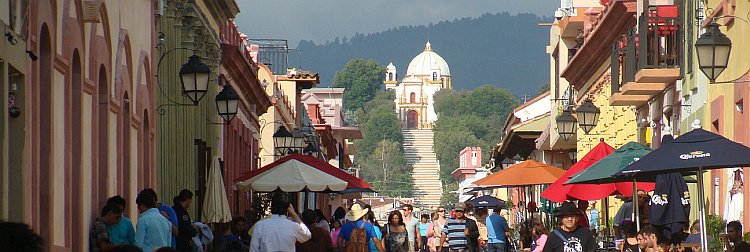
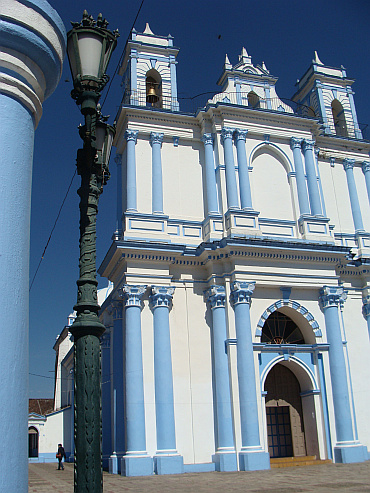
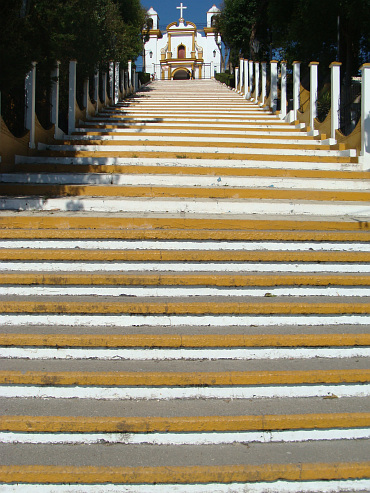
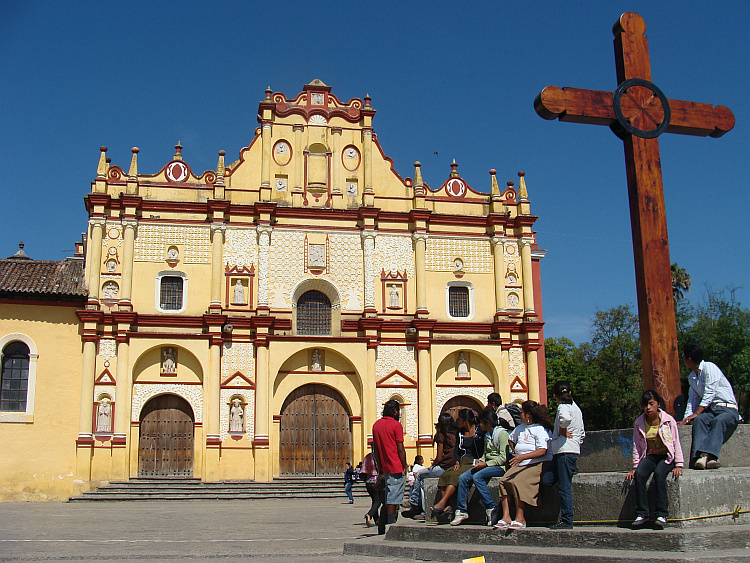
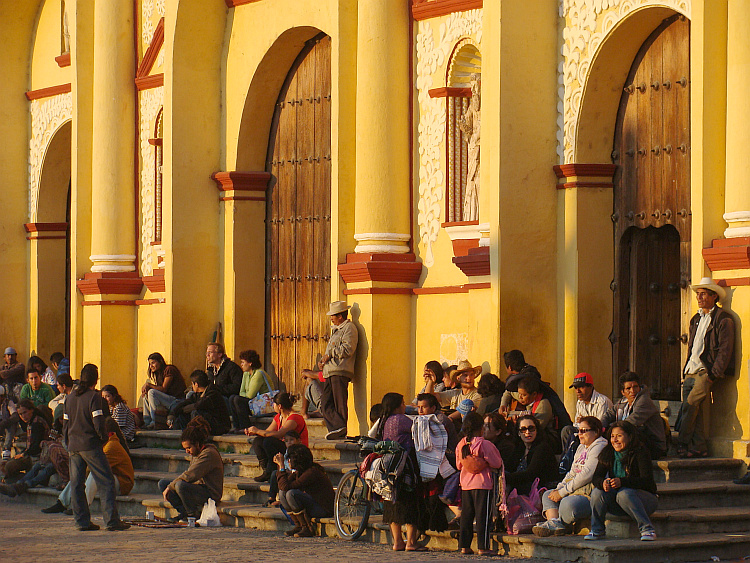

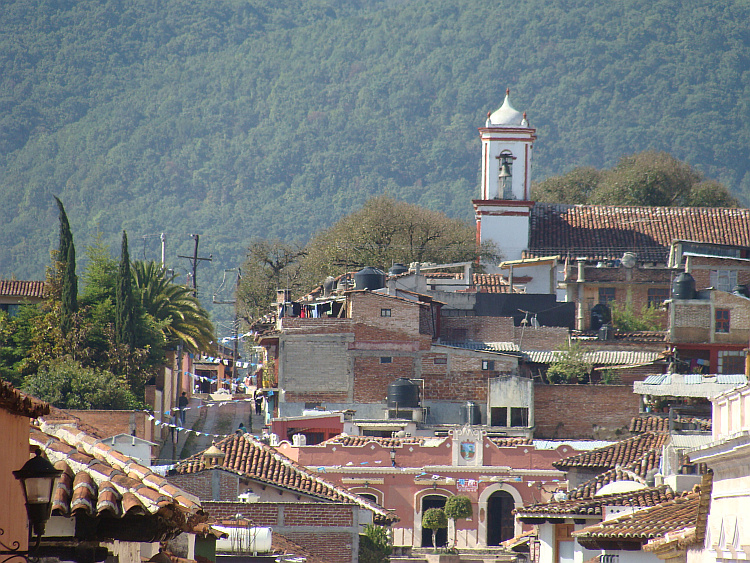
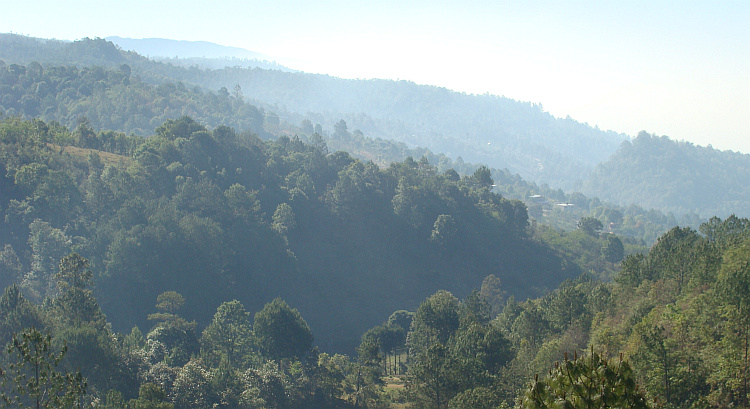


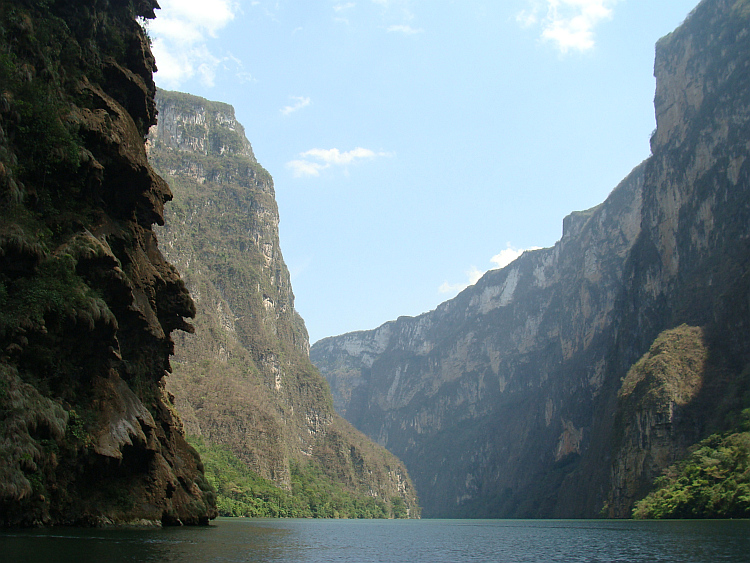
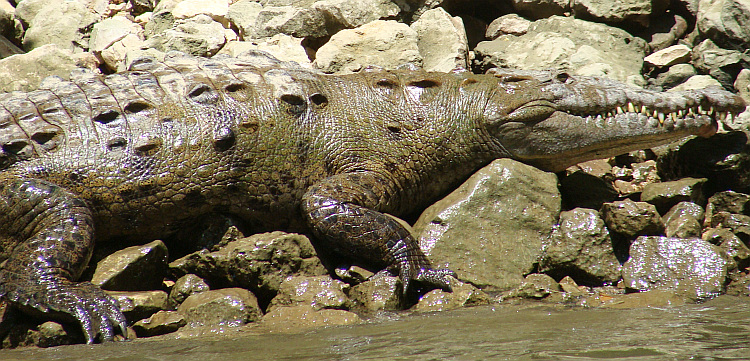
 I descended from the highlands of Chiapas down to the Isthmus, where Mexico
is at its most narrow. The cool temperatures of the highlands were gone.
During the day it was forty degrees and at night it was thirty degrees. The
sweat gushed twenty-four hours a day from my pores. There was no wind and
the stagnant air was stifling. I wanted to head back to the highlands at
the first opportunity. This was offered after two hundred kilometers. From
Tehuantepec a small road was leading to Oaxaca in the highlands. I had plenty
of mountains to cross to get there. Over two hundred and fifty kilometers of
sweltering ridges separated me from the traditional Indian city. Because there
would be very few water and food available, I had to go with extensive stocks
for at least two days.
I descended from the highlands of Chiapas down to the Isthmus, where Mexico
is at its most narrow. The cool temperatures of the highlands were gone.
During the day it was forty degrees and at night it was thirty degrees. The
sweat gushed twenty-four hours a day from my pores. There was no wind and
the stagnant air was stifling. I wanted to head back to the highlands at
the first opportunity. This was offered after two hundred kilometers. From
Tehuantepec a small road was leading to Oaxaca in the highlands. I had plenty
of mountains to cross to get there. Over two hundred and fifty kilometers of
sweltering ridges separated me from the traditional Indian city. Because there
would be very few water and food available, I had to go with extensive stocks
for at least two days. 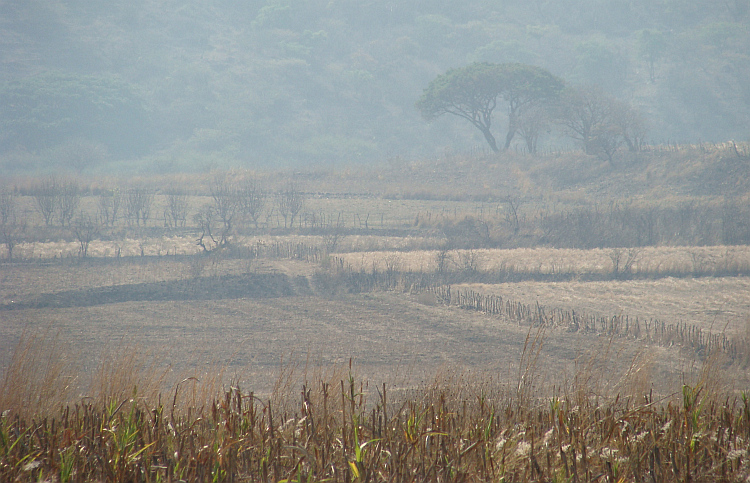
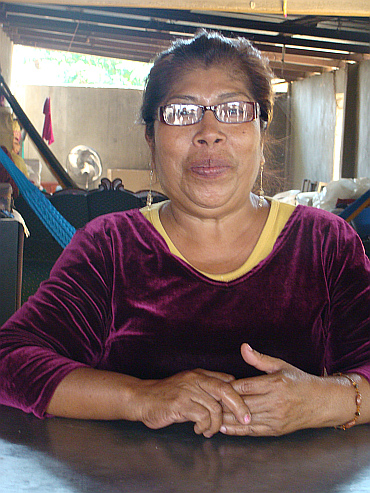
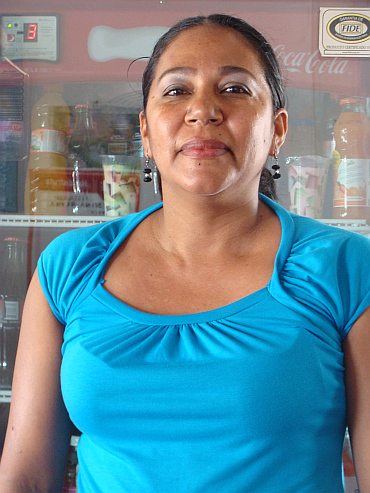
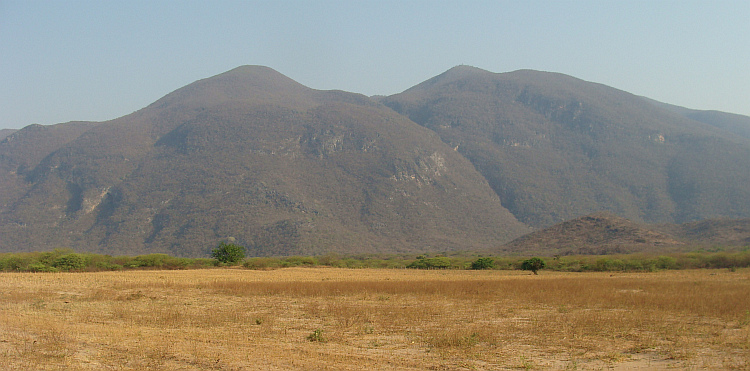
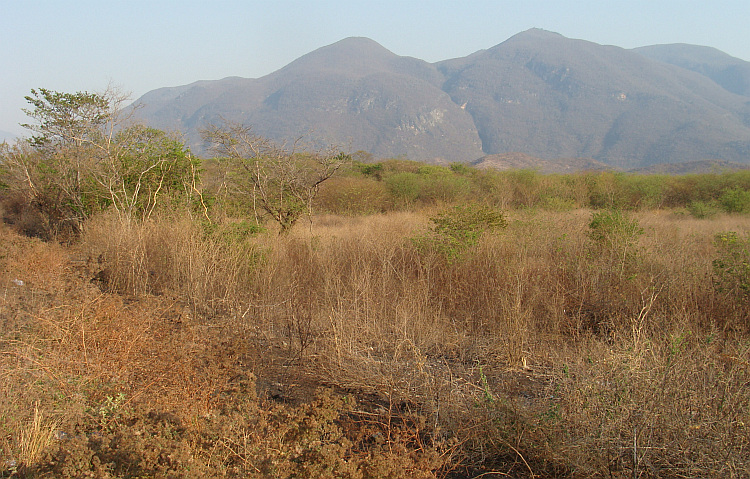

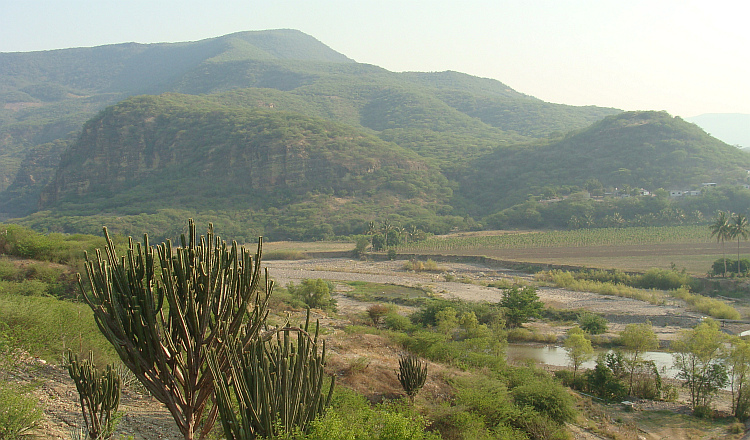
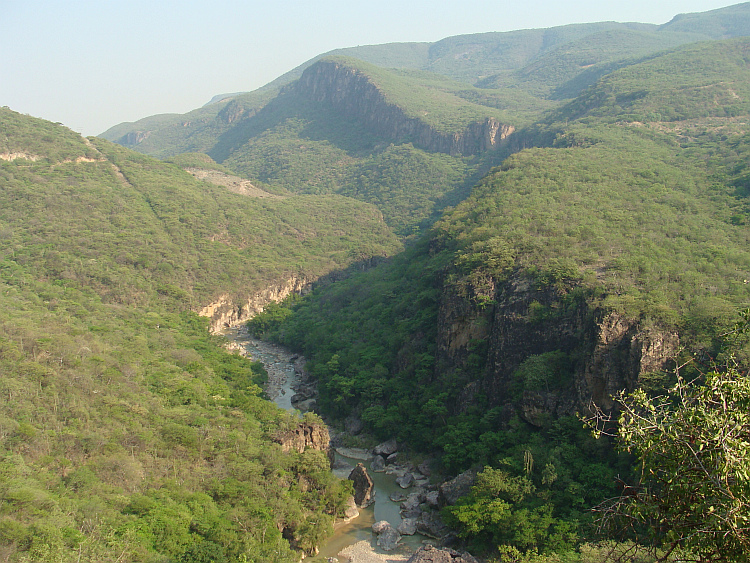
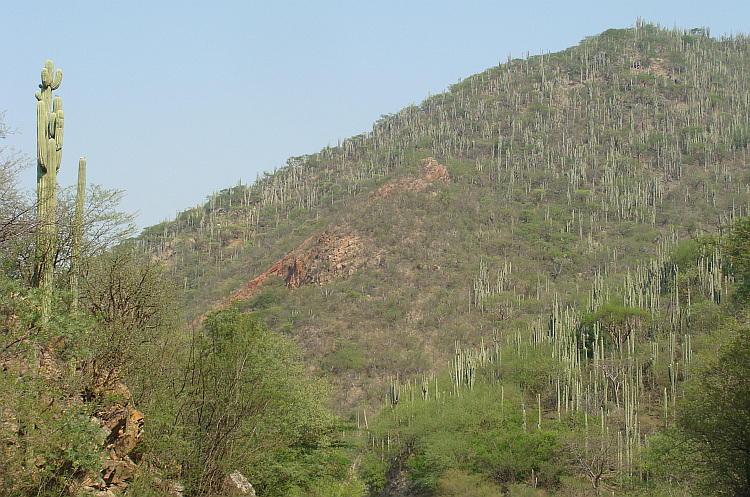
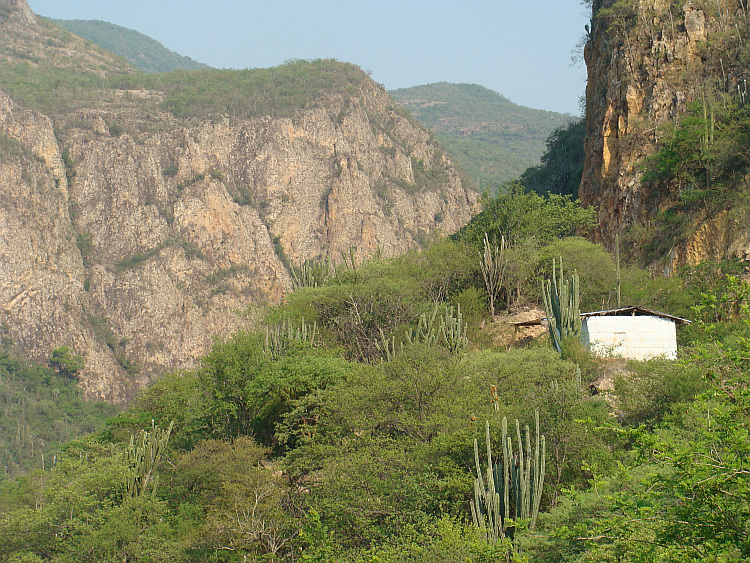
 The mountainous route had its fair share of highs and lows, but ended uphill on the plateau.
Here were substantial villages again. Over the flat terrain I bridged the remaining
kilometers to Oaxaca.
The mountainous route had its fair share of highs and lows, but ended uphill on the plateau.
Here were substantial villages again. Over the flat terrain I bridged the remaining
kilometers to Oaxaca.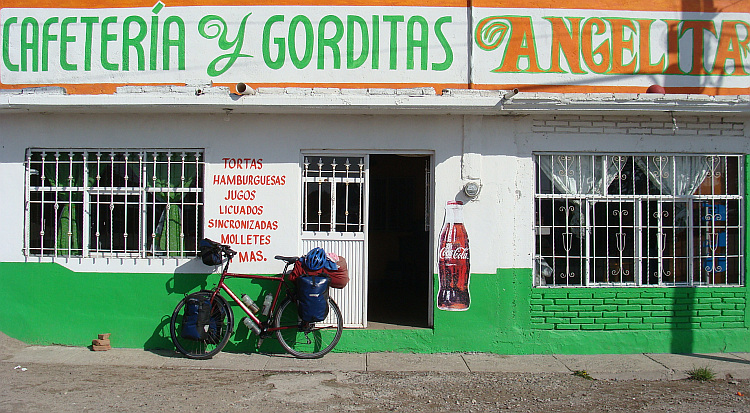
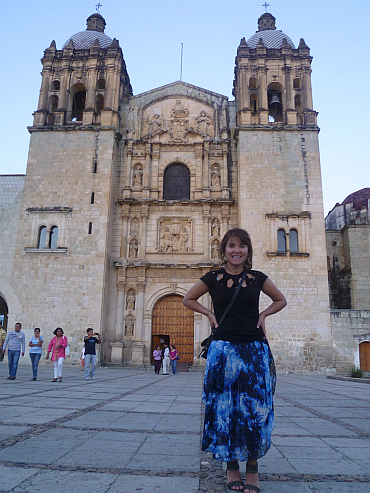
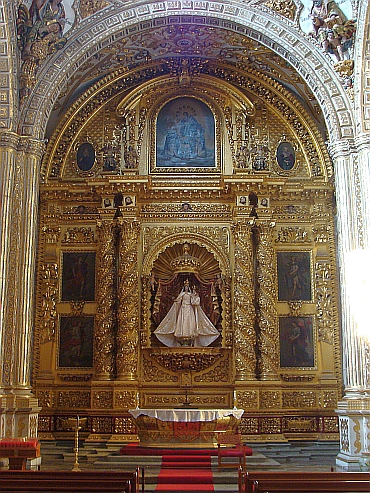
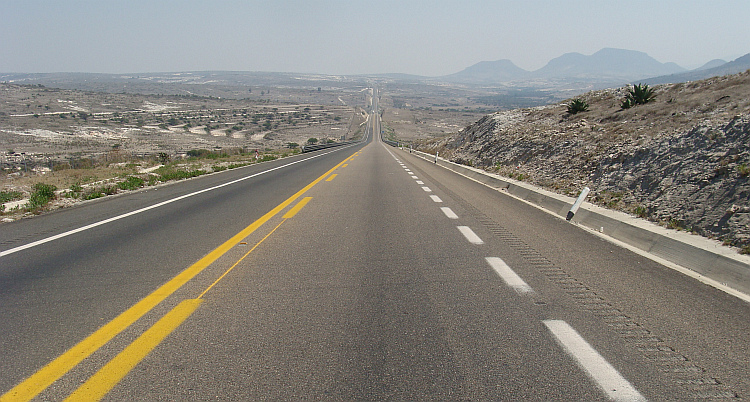
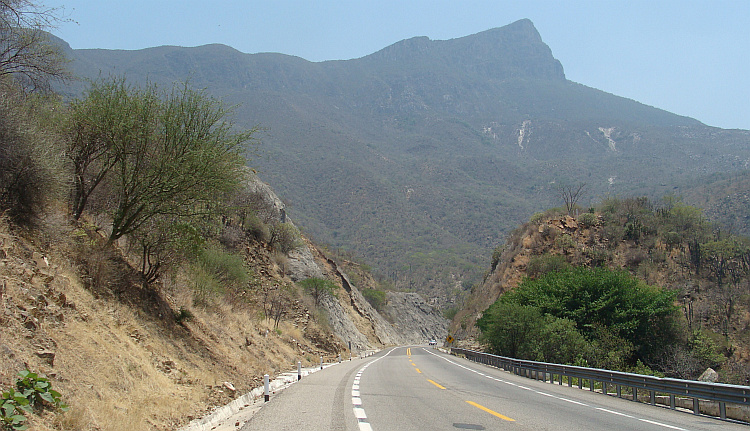
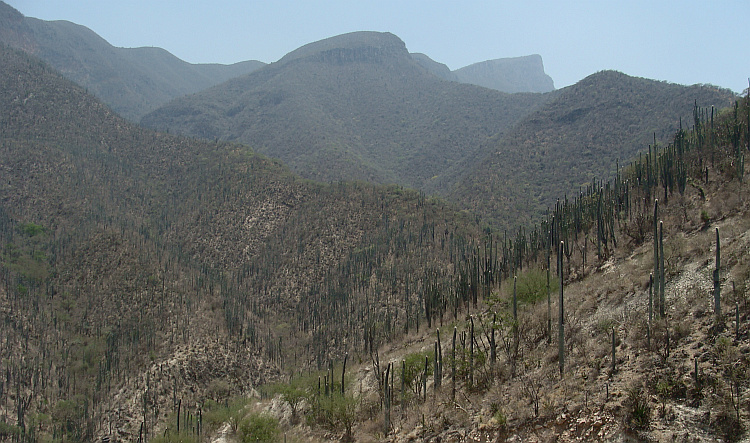
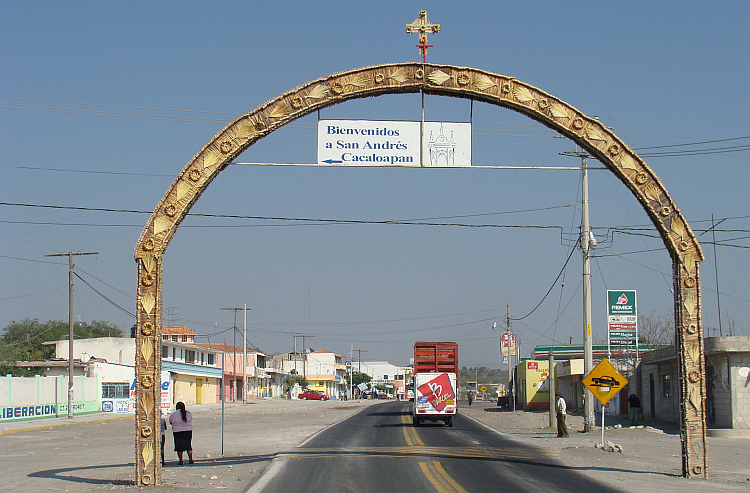
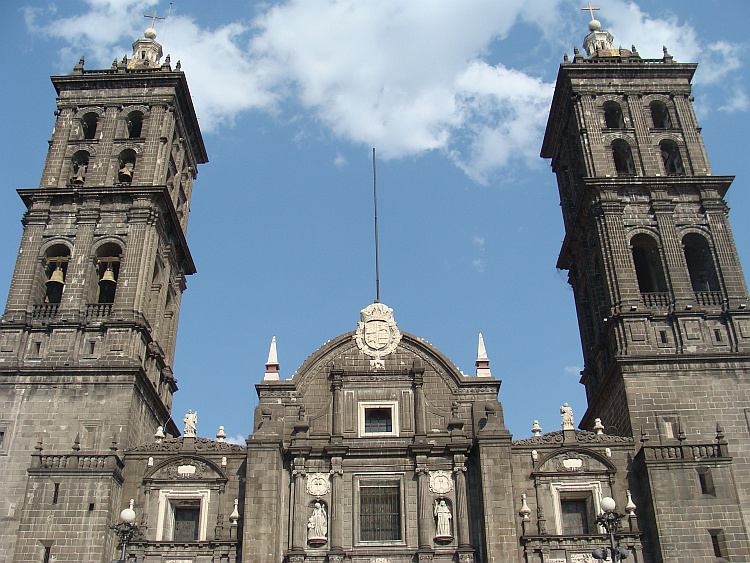
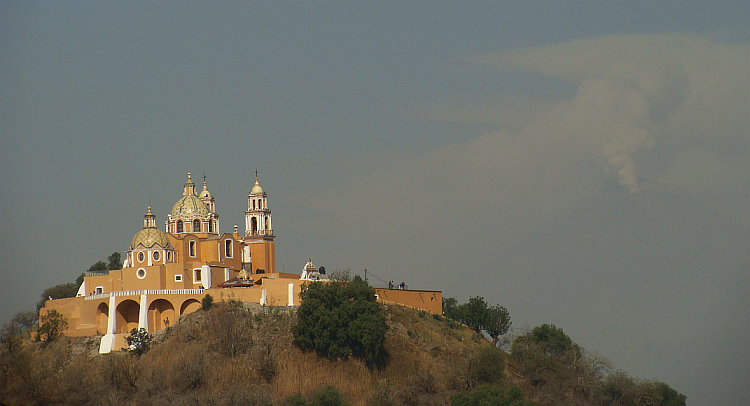
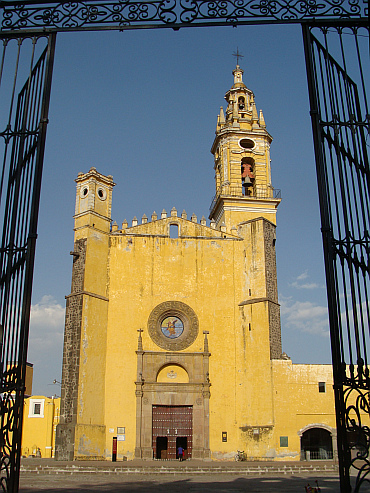

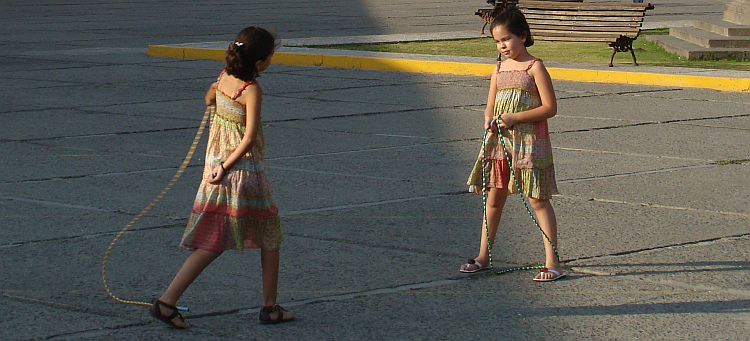

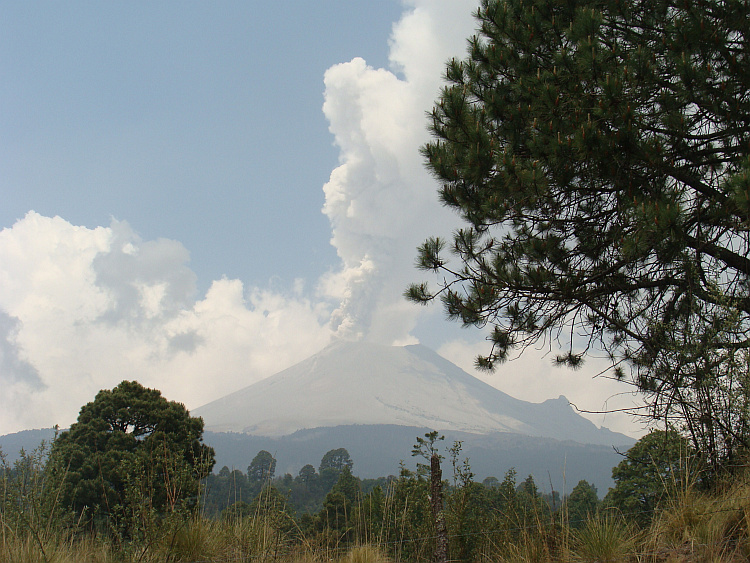
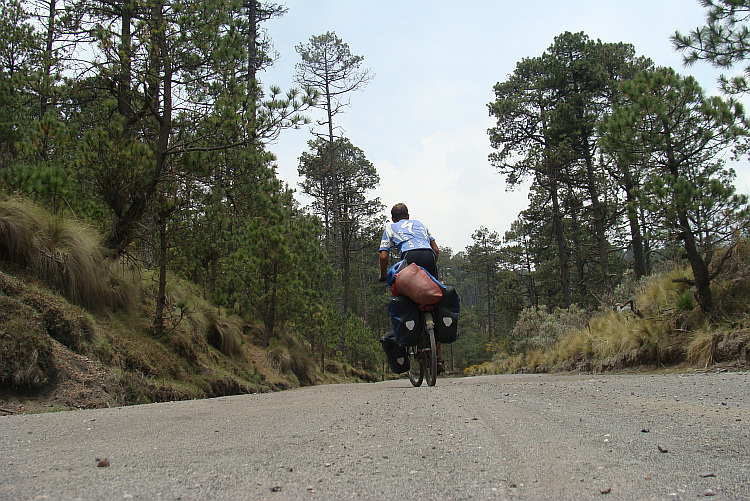
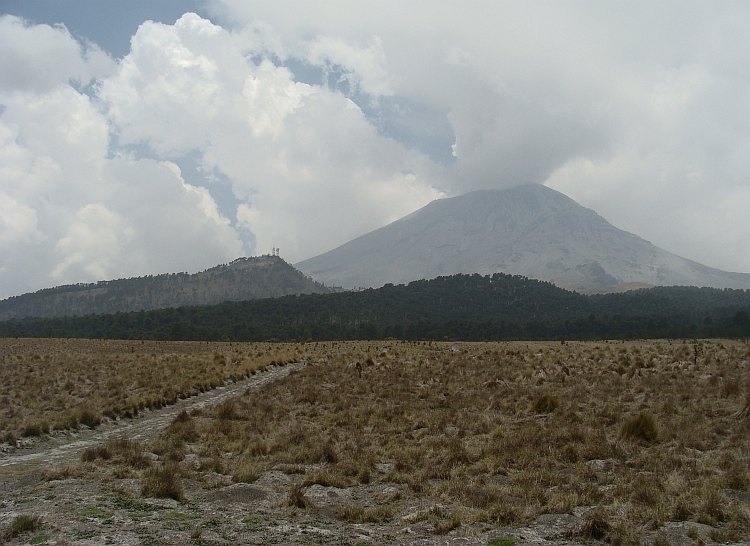
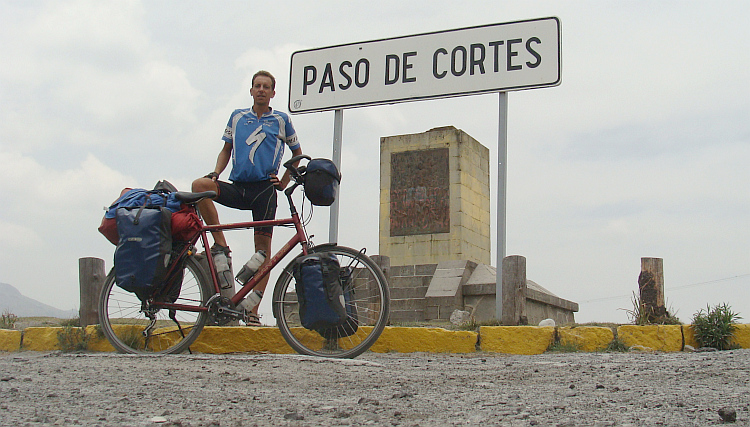
Golden Days in the Silver Cities 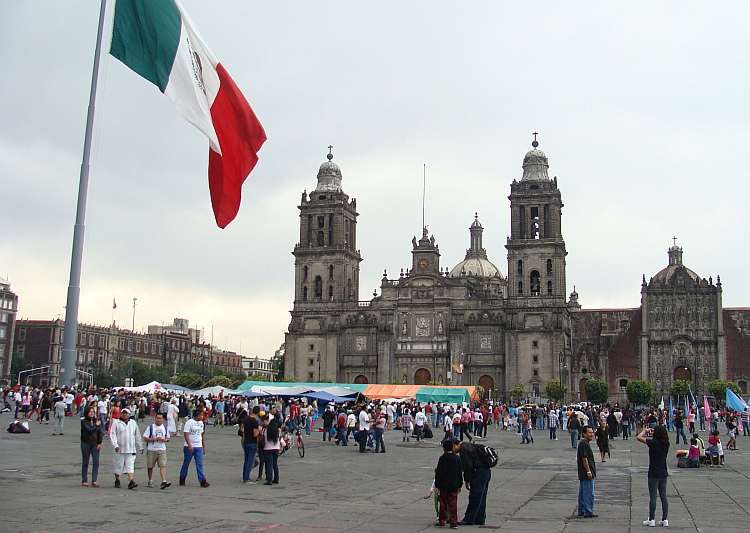
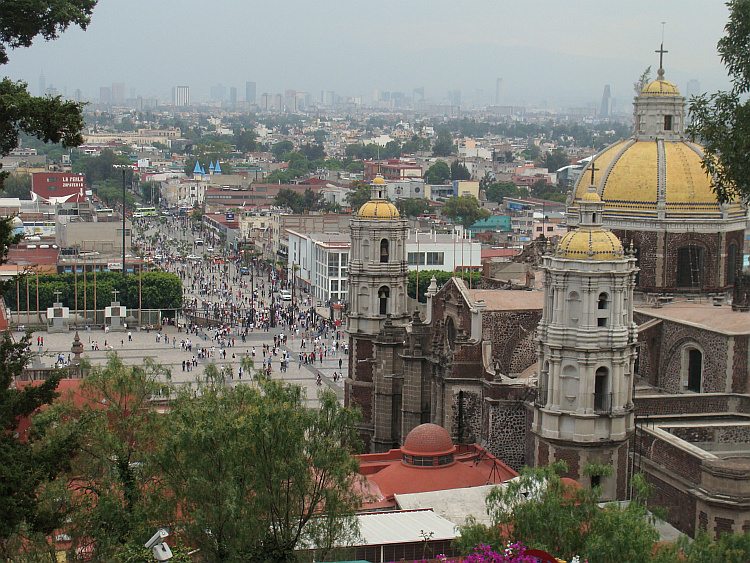
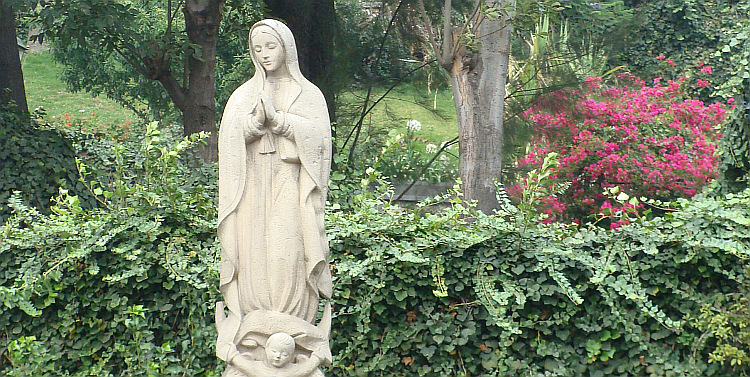
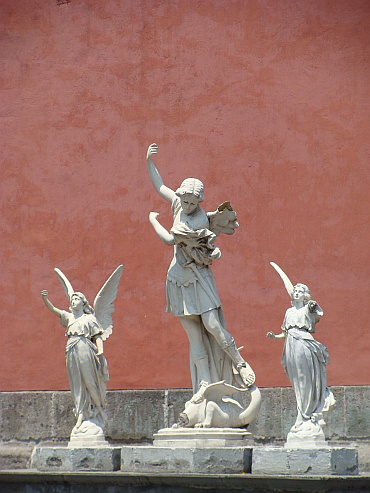
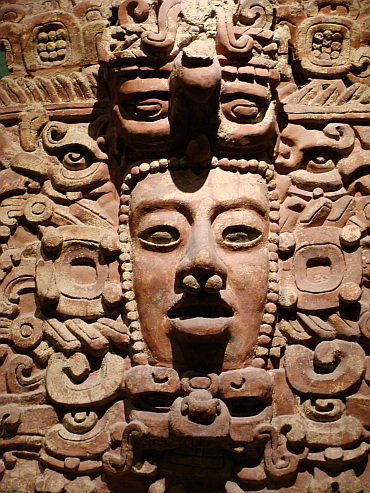
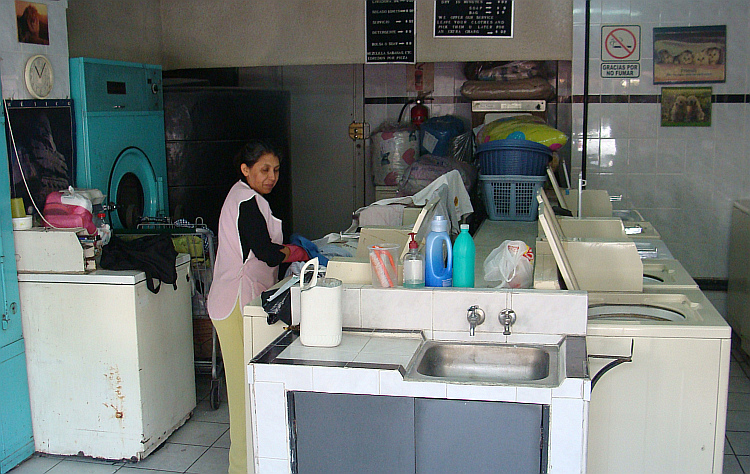

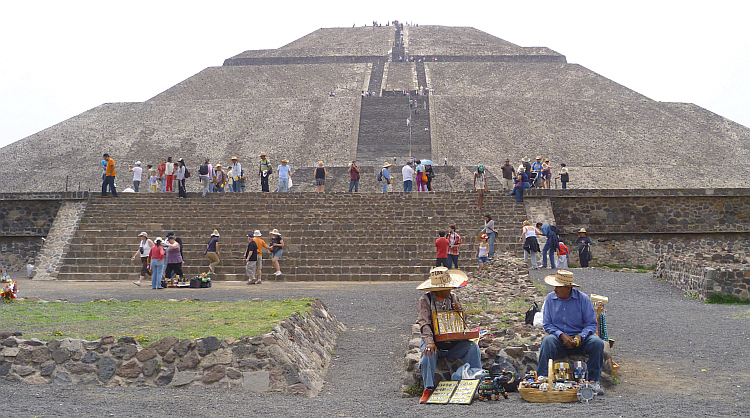

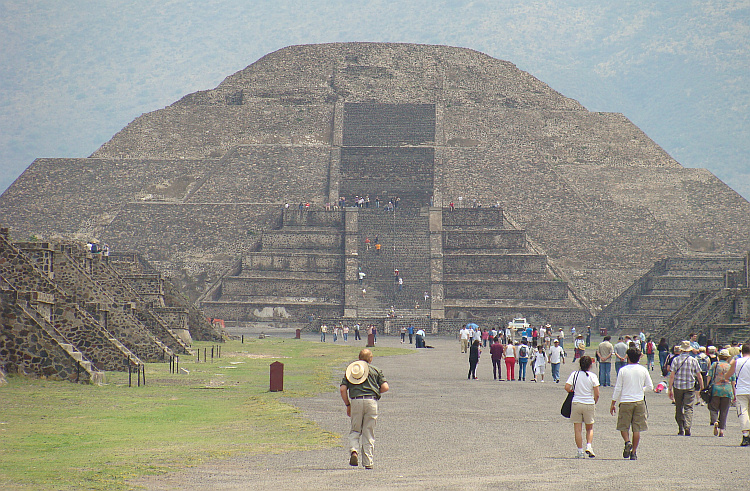
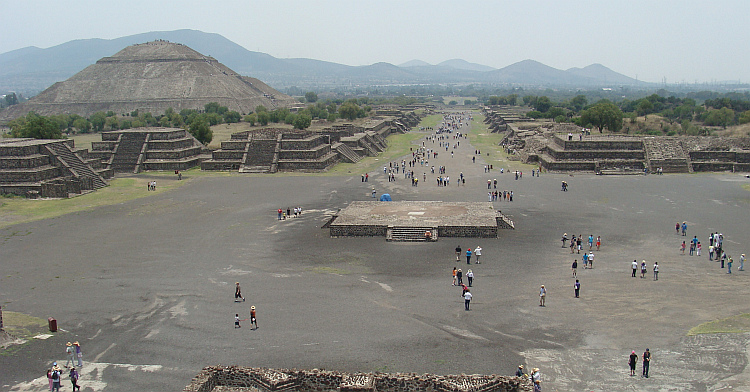
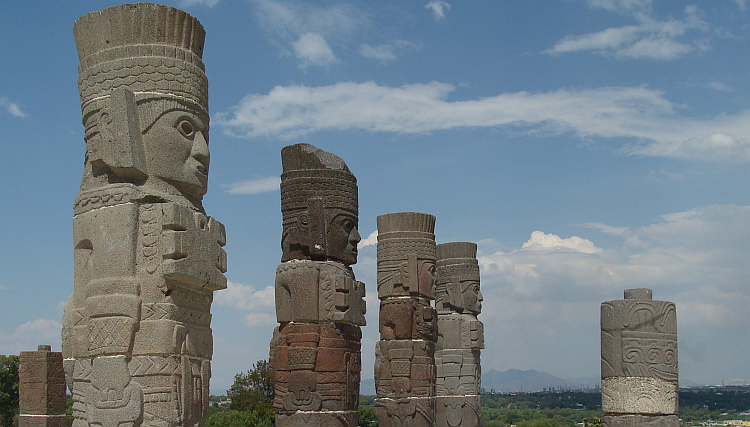

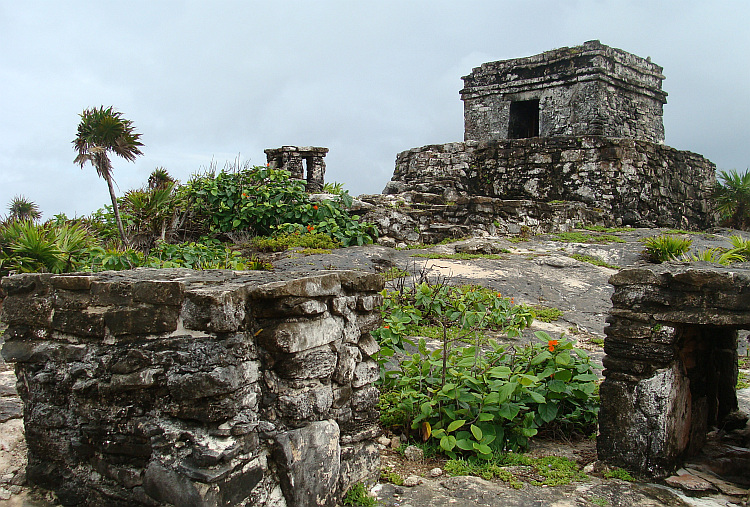
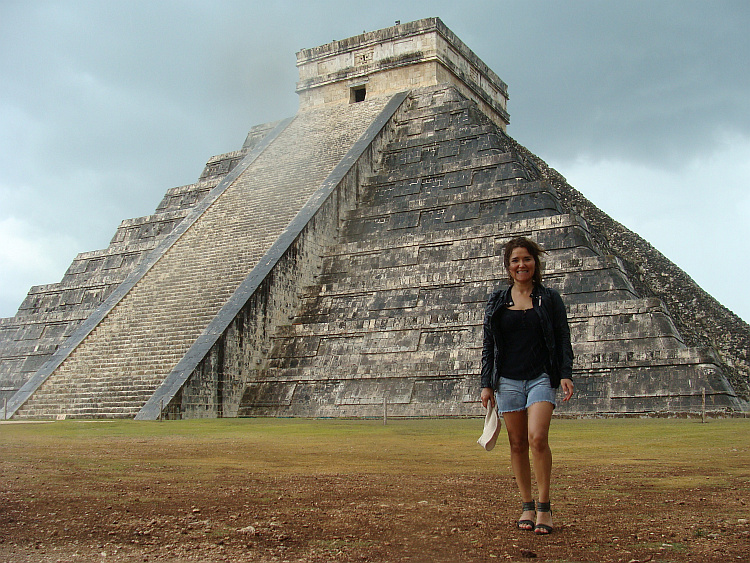
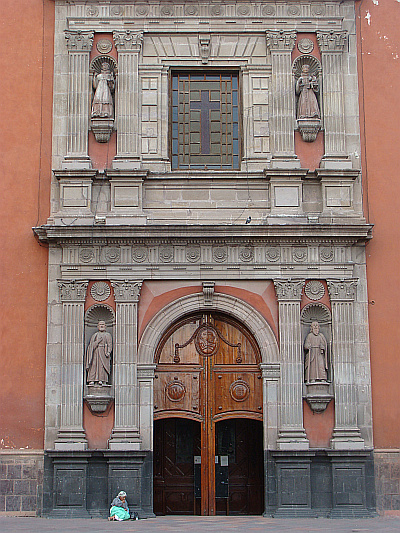 The first Silver City on my route was Querétaro. In 1810 secret discussions
took place, where Josefa Ortiz, the wife of the Mayor of Querétaro, played
an important role. Place of the act was the residence of the man of Josefa
Ortiz, mayor Miguel Domínguez. New Spain was a class society where the
Spaniards had the highest order. The Criollos, the Spaniards that were born
in the Americas, were the second-class citizens. The Mestizos, Indians and
African slaves were the third-, fourth- and fifth order citizens of New
Spain. Inspired by the emerging European ideals of freedom and equality, Josefa
Ortiz, Miguel Hidalgo and others were planning to overthrow the colonial regime.
It would not come to that. The group was betrayed and Mayor Miguel Domínguez
was given the task to detect the conspirators. To his great surprise the trail
led to his own wife. Miguel Domínguez saw himself forced to capture his
own wife. Miguel Hidalgo and the other conspirators fled in a rush.
The first Silver City on my route was Querétaro. In 1810 secret discussions
took place, where Josefa Ortiz, the wife of the Mayor of Querétaro, played
an important role. Place of the act was the residence of the man of Josefa
Ortiz, mayor Miguel Domínguez. New Spain was a class society where the
Spaniards had the highest order. The Criollos, the Spaniards that were born
in the Americas, were the second-class citizens. The Mestizos, Indians and
African slaves were the third-, fourth- and fifth order citizens of New
Spain. Inspired by the emerging European ideals of freedom and equality, Josefa
Ortiz, Miguel Hidalgo and others were planning to overthrow the colonial regime.
It would not come to that. The group was betrayed and Mayor Miguel Domínguez
was given the task to detect the conspirators. To his great surprise the trail
led to his own wife. Miguel Domínguez saw himself forced to capture his
own wife. Miguel Hidalgo and the other conspirators fled in a rush.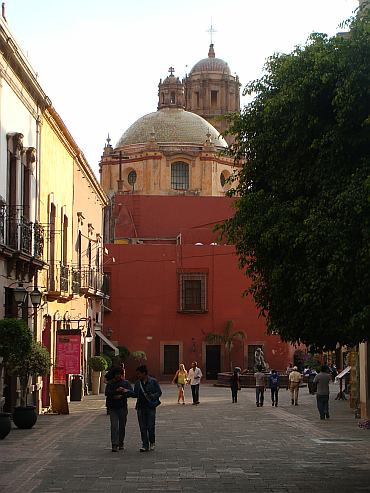
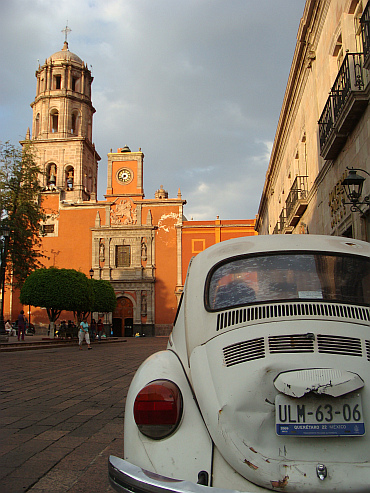
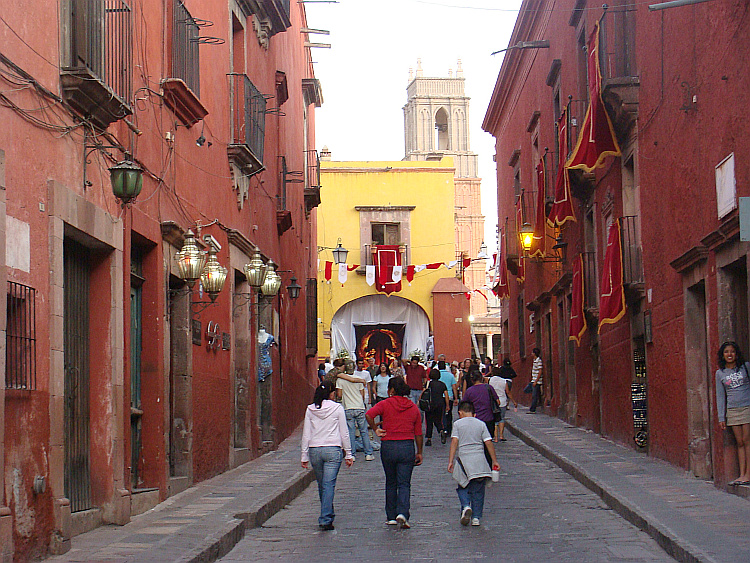
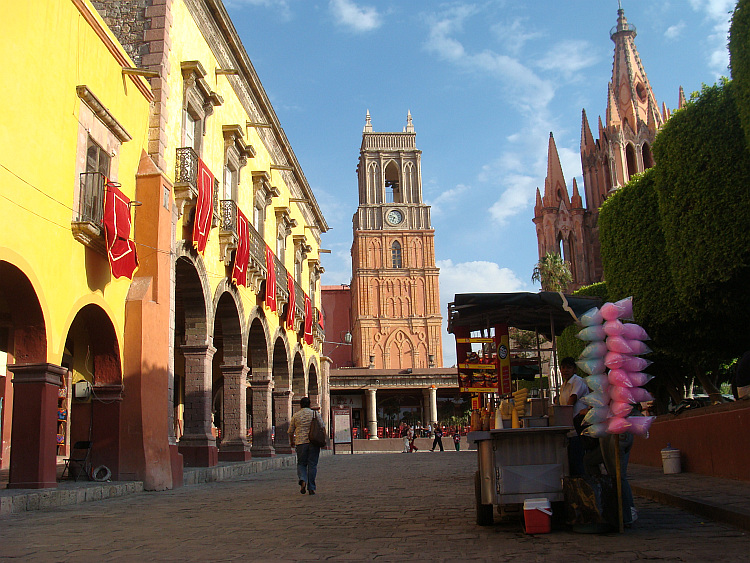
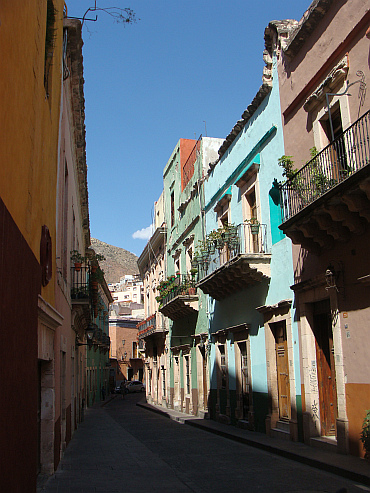
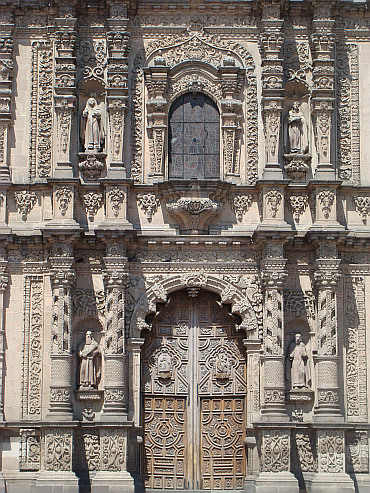

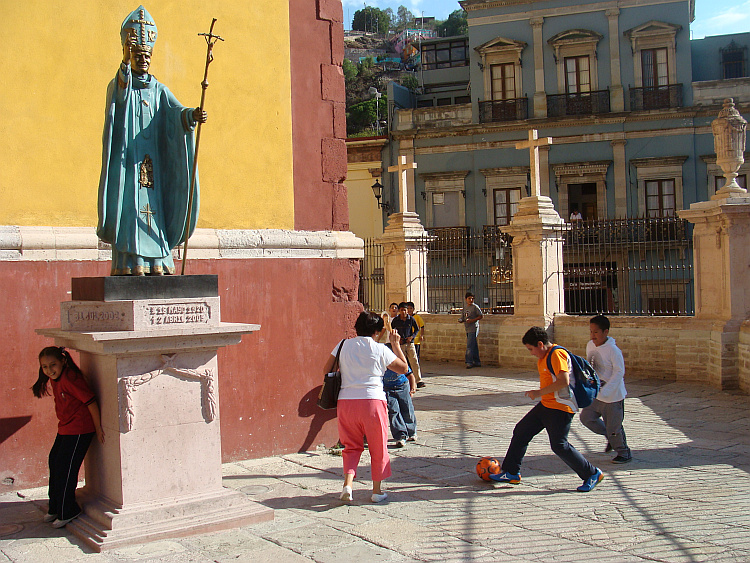

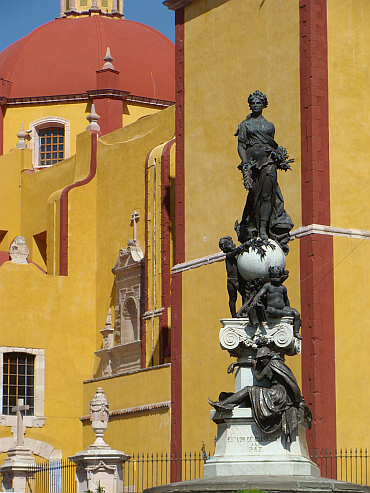


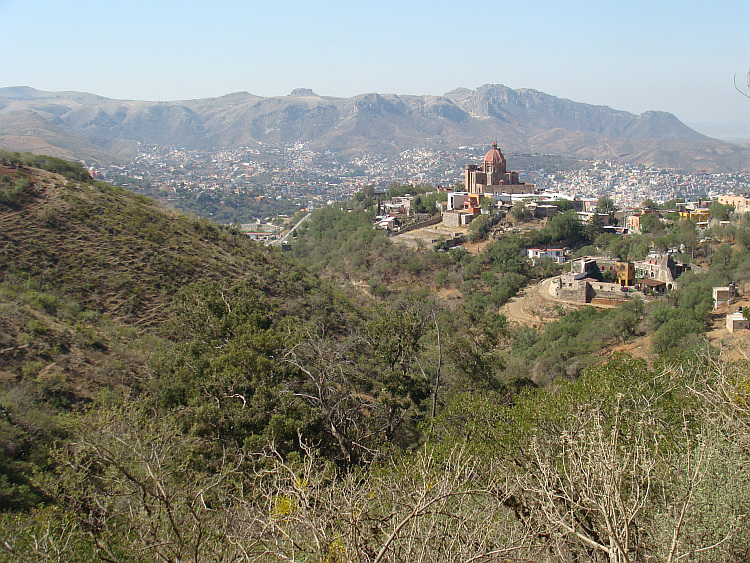


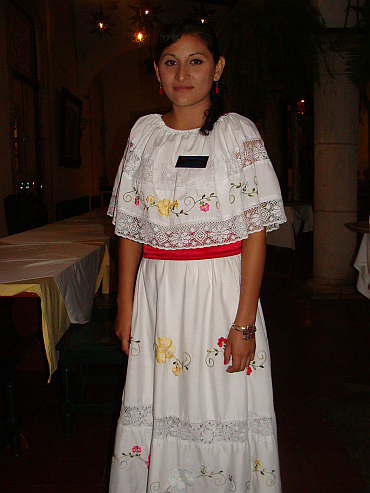
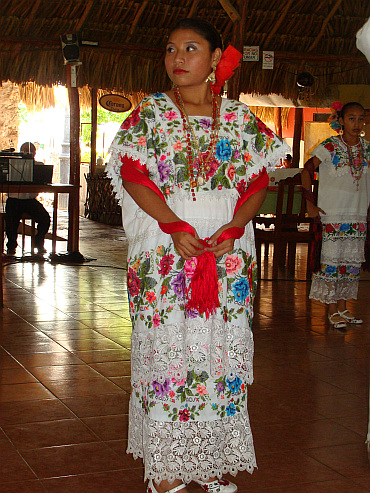
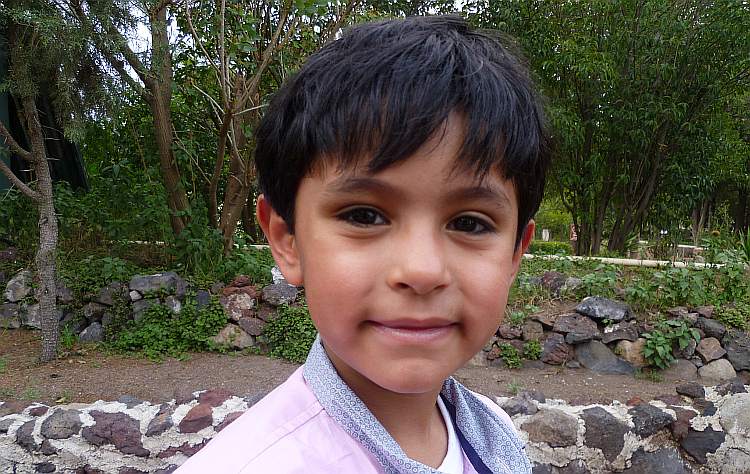
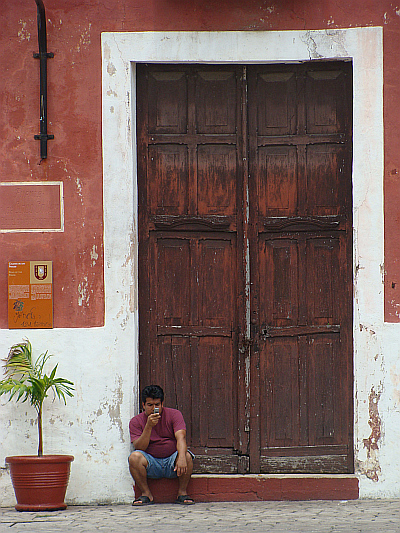 be one of the world's largest election gains ever. There were only a few hundred
alternative votes counted. Only Saddam Hussein would achieve a numerically
more convincing election victory a hundred years later. Everyone in Mexico
understood that something had gone wrong with the count. Opponent Francisco
Madero fled headlong and sought contact with the rebel leaders Pancho Villa
and Emiliano Zapata. Both freedom fighters had a growing army fighting
for fair land distribution, Pancho Villa in the northern desert provinces and
Emiliano Zapata in the southern regions. In 1910 the joint forces got Porfirio
Díaz on his knees in the Battle of Ciudad Juarez. The Mexican revolution was
a fact and Francisco Madero was democratically elected president in 1911.
During his brief presidency Madero had to keep unstable Mexico together. He
held a middle course between the Zapatistas and the right forces. Eventually the
Democrat would be betrayed and killed by General Victoriano Huerta. Just three
years after the Mexican revolution the country was saddled with a new dictator.
Pancho Villa was fighting many years against the new dictator with varying
success to be killed in an assault in 1923. Even more than Pancho Villa, Emiliano
Zapata, would be the great hero of Mexico. With his impressive mustache and
equally impressive sombrero, he is the archetypal hero of tortilla westerns such
as Viva Zapata, starring Marlon Brando.
be one of the world's largest election gains ever. There were only a few hundred
alternative votes counted. Only Saddam Hussein would achieve a numerically
more convincing election victory a hundred years later. Everyone in Mexico
understood that something had gone wrong with the count. Opponent Francisco
Madero fled headlong and sought contact with the rebel leaders Pancho Villa
and Emiliano Zapata. Both freedom fighters had a growing army fighting
for fair land distribution, Pancho Villa in the northern desert provinces and
Emiliano Zapata in the southern regions. In 1910 the joint forces got Porfirio
Díaz on his knees in the Battle of Ciudad Juarez. The Mexican revolution was
a fact and Francisco Madero was democratically elected president in 1911.
During his brief presidency Madero had to keep unstable Mexico together. He
held a middle course between the Zapatistas and the right forces. Eventually the
Democrat would be betrayed and killed by General Victoriano Huerta. Just three
years after the Mexican revolution the country was saddled with a new dictator.
Pancho Villa was fighting many years against the new dictator with varying
success to be killed in an assault in 1923. Even more than Pancho Villa, Emiliano
Zapata, would be the great hero of Mexico. With his impressive mustache and
equally impressive sombrero, he is the archetypal hero of tortilla westerns such
as Viva Zapata, starring Marlon Brando.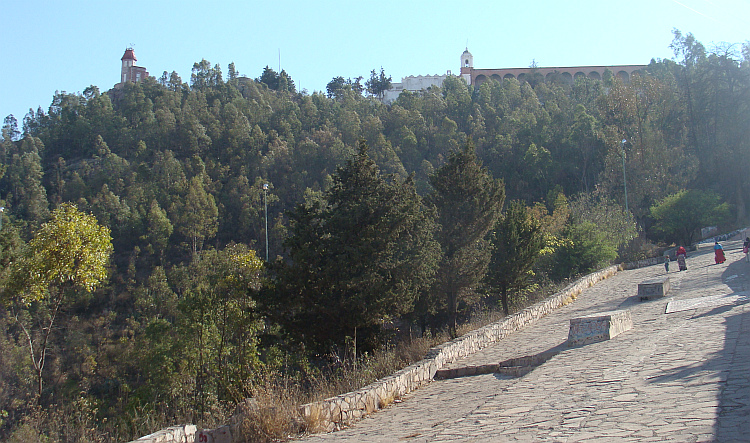
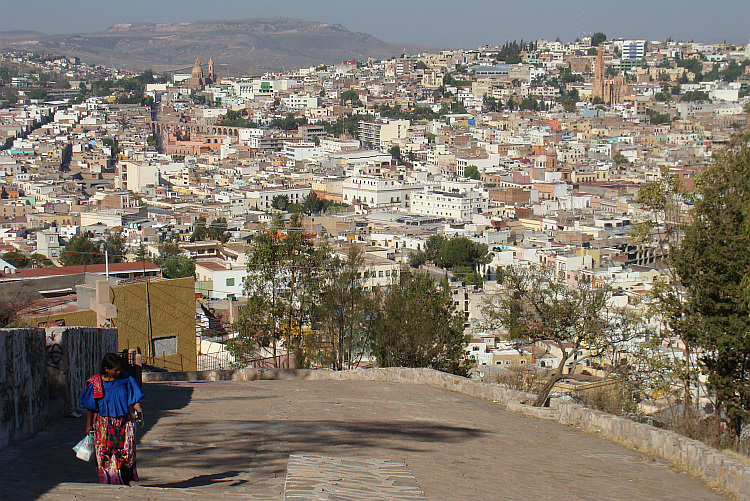


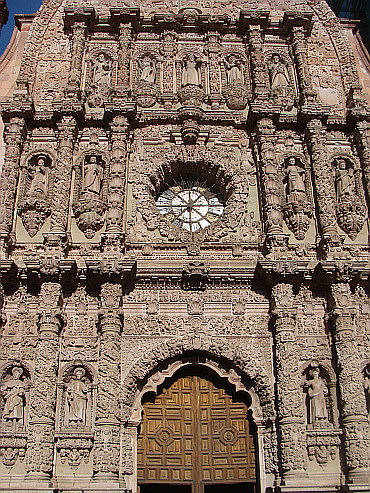
Land of all my Dreams 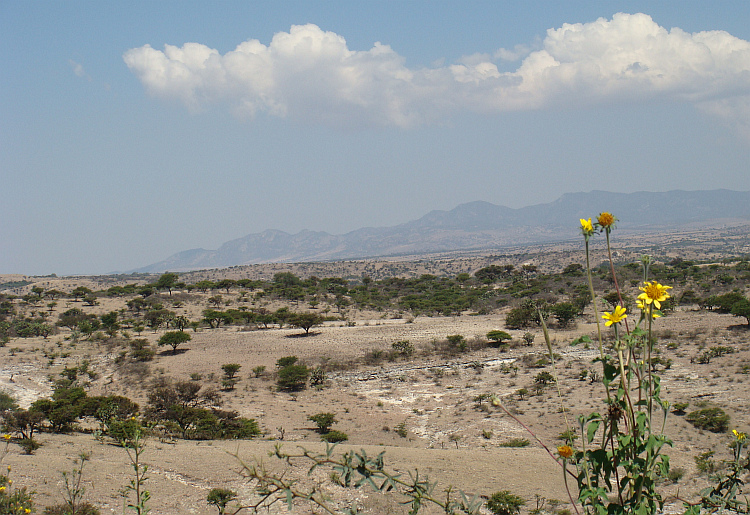
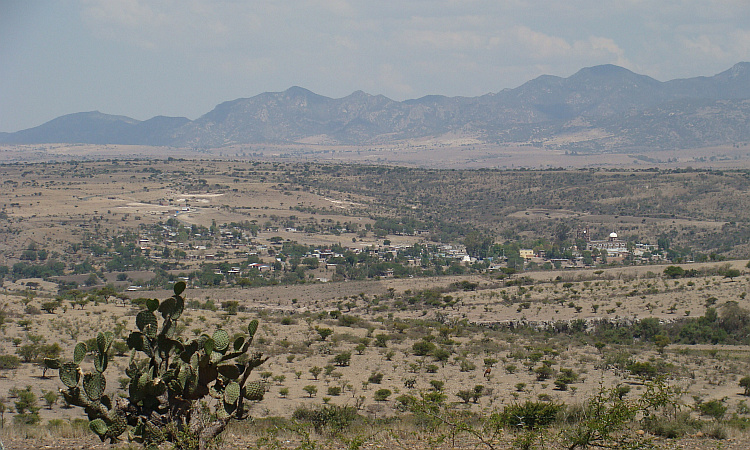

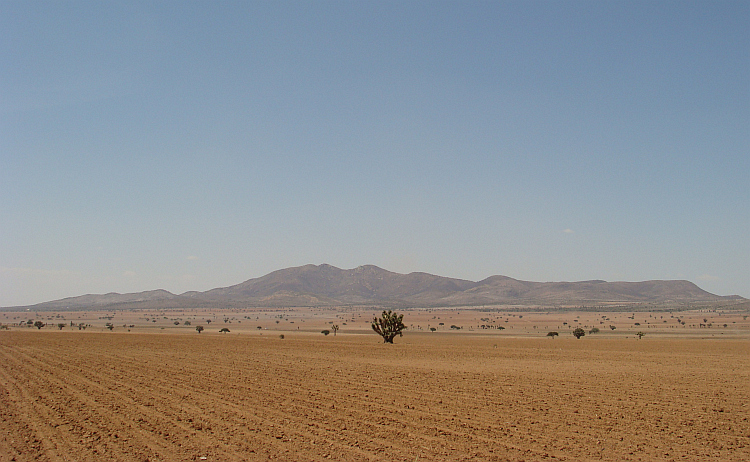
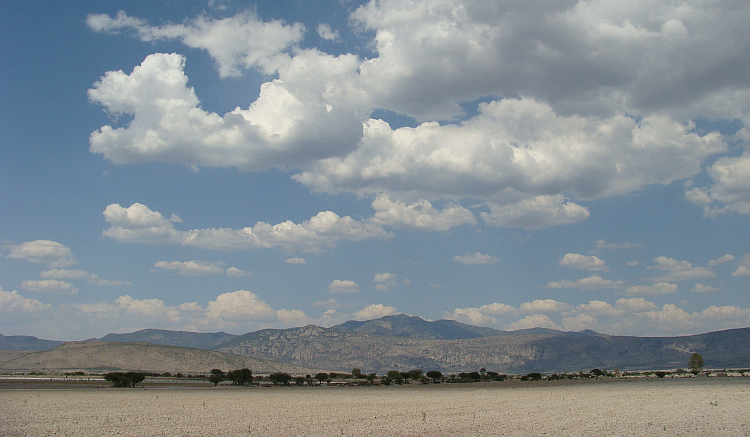

"Mexico ........"
"Mexi ... hiiiiii"
Then about an octave higher:
"Mexi ... hiiiiii"
Now very, very high and uncontrolled false:
"Hiiiiiiiii ... hii ... iiiiiiiii"
Coyotes and iguanas had severe hearing damage and throughout the landscape
new whirlwinds were being created. Nevertheless, the singer hit a full octave
higher:
"Hiiiiiiiii ... hii ... iiiiiiiii"
And then, triumphantly, accompanied by a hundred mustachioed Mexicans with
sombreros and rattling guitars:
"MEXI ... hiiiiiiiii ... COOOOOOO, O land of my dreaeaea ... heaeaeams, with
guitar music you brought the romance for him and meeeeeeeeeeeeeeee ........ "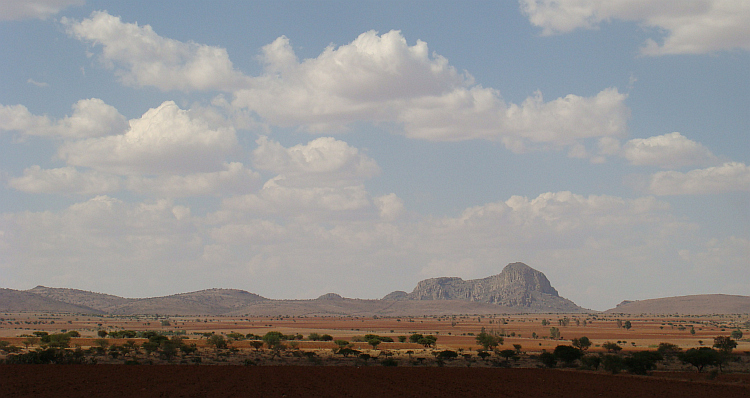
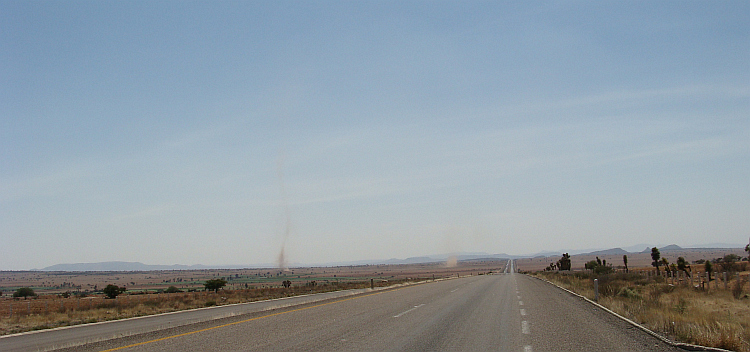
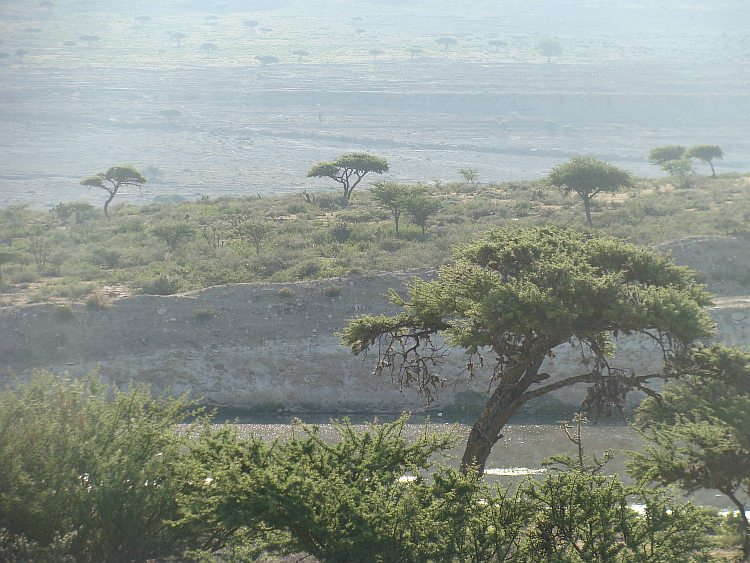
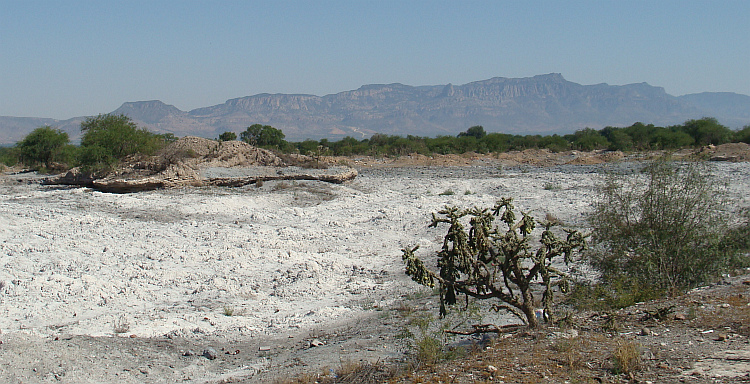
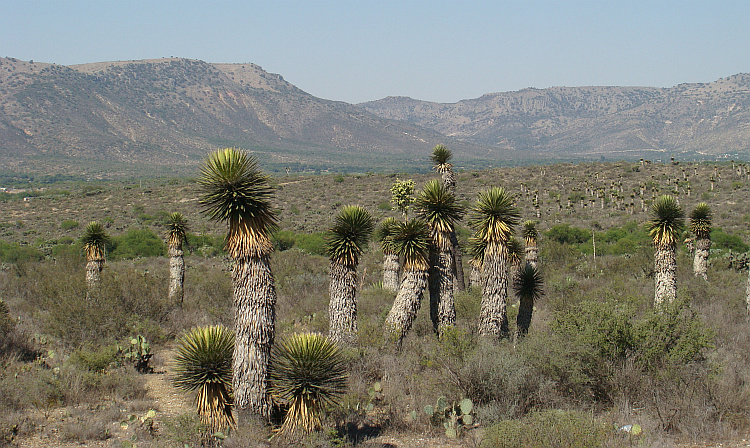
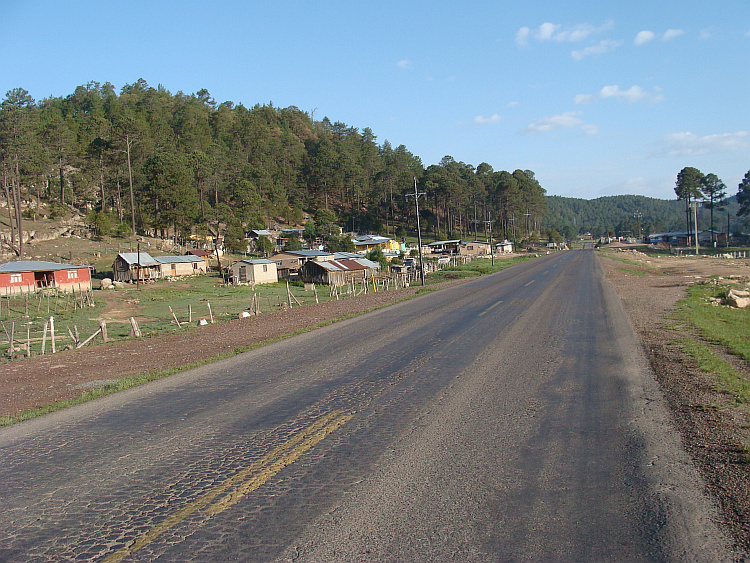
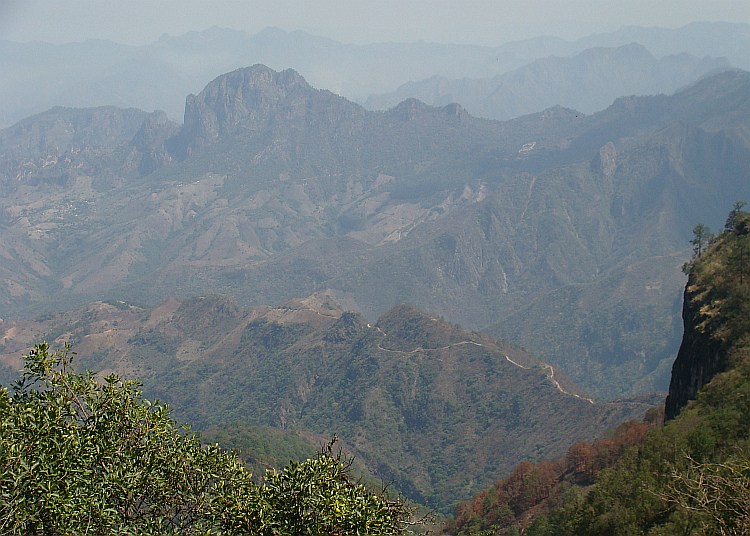
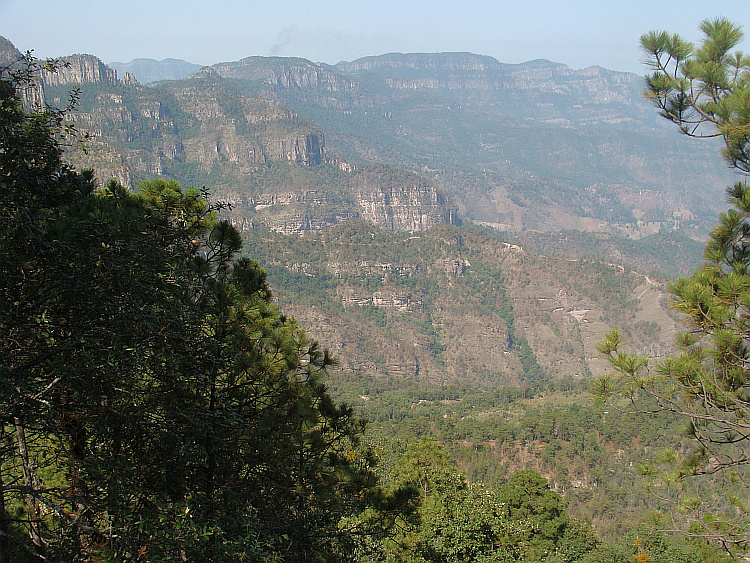

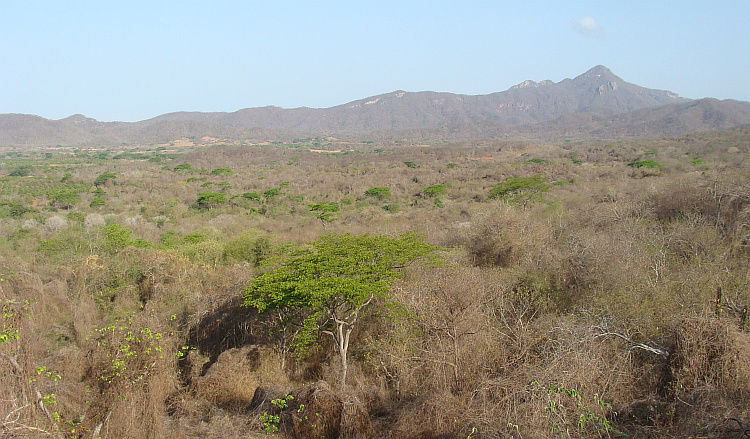
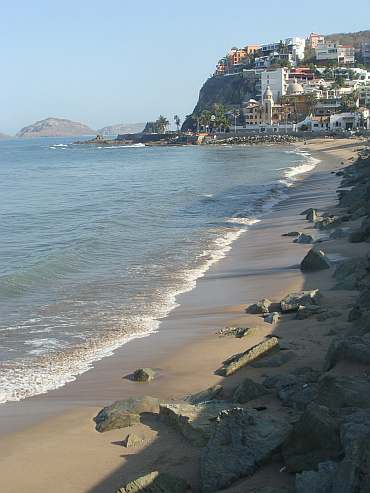
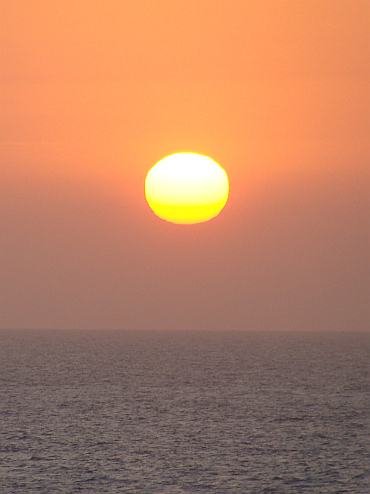
Burning Sand 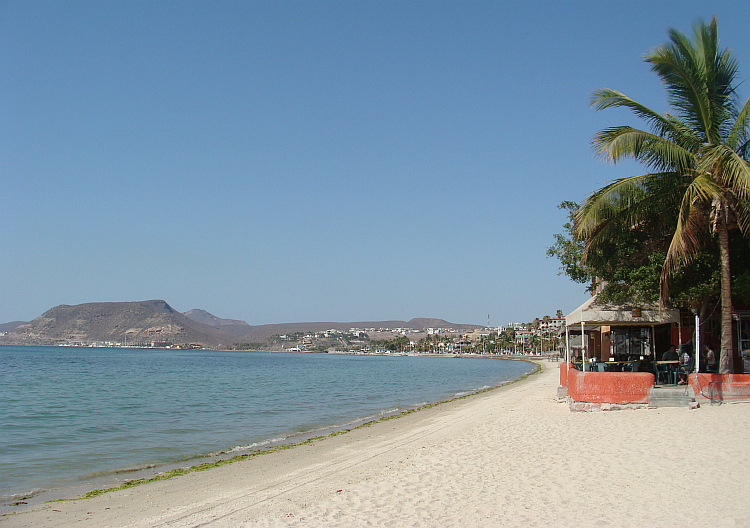
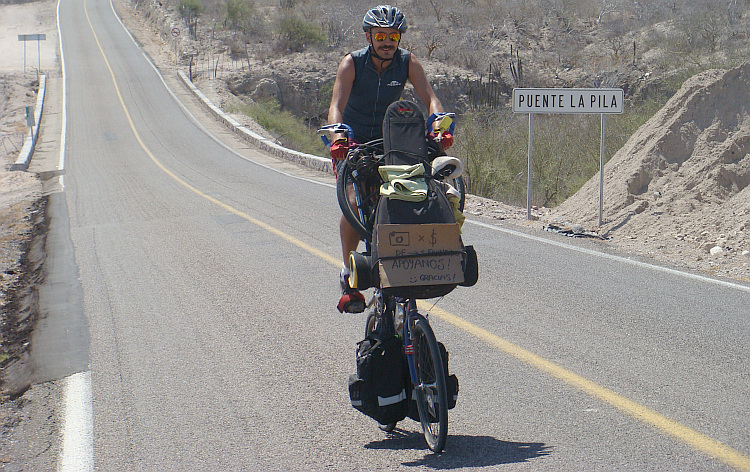
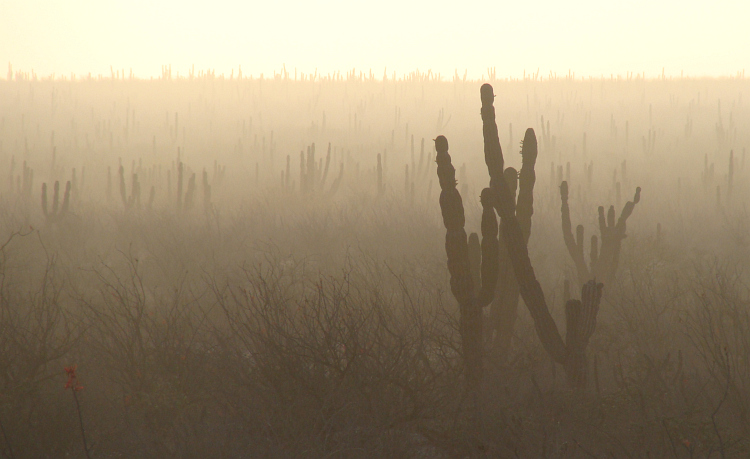
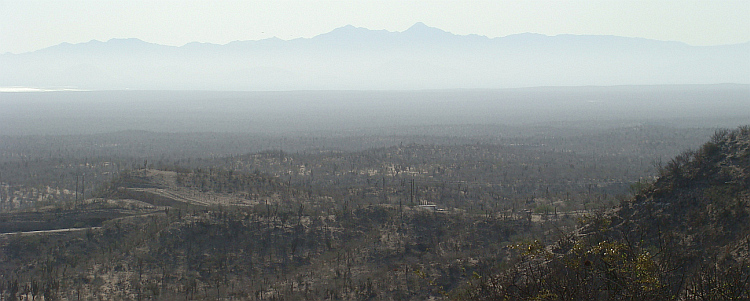
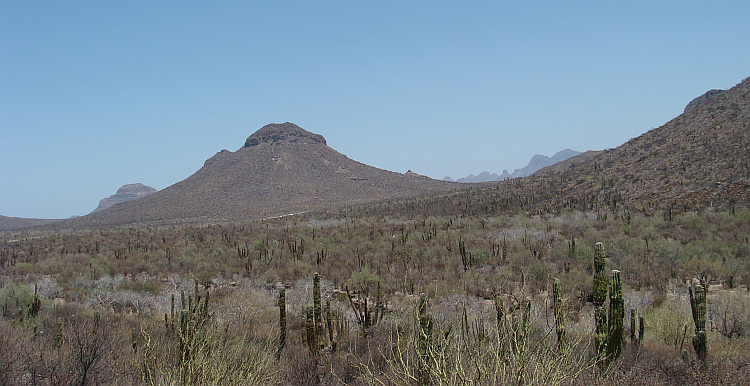
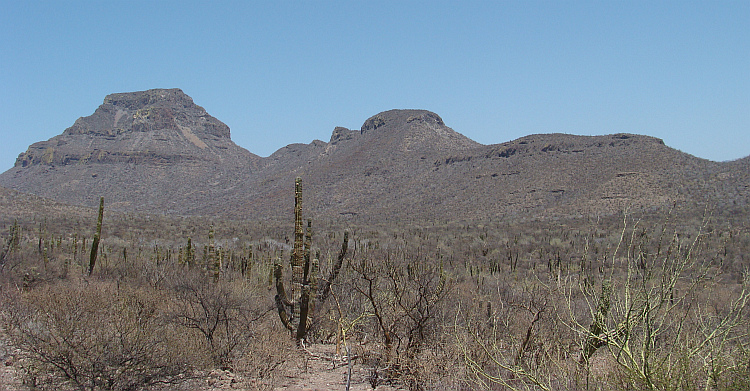
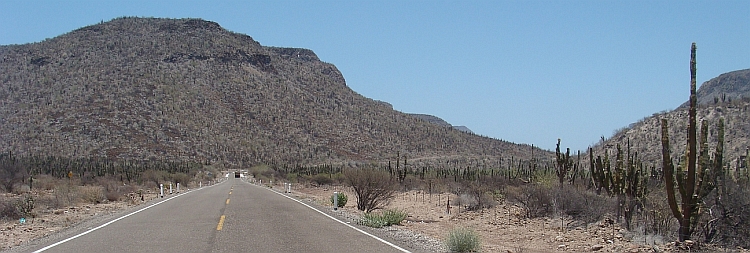
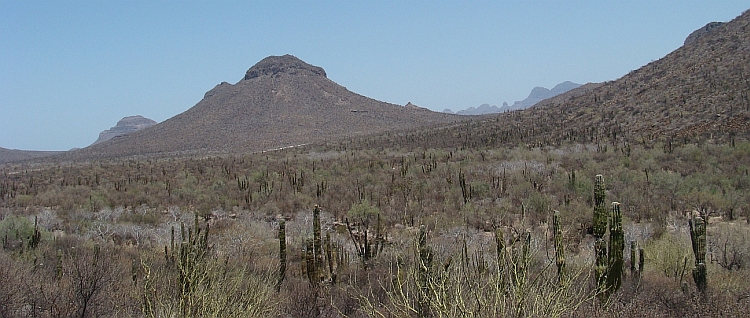

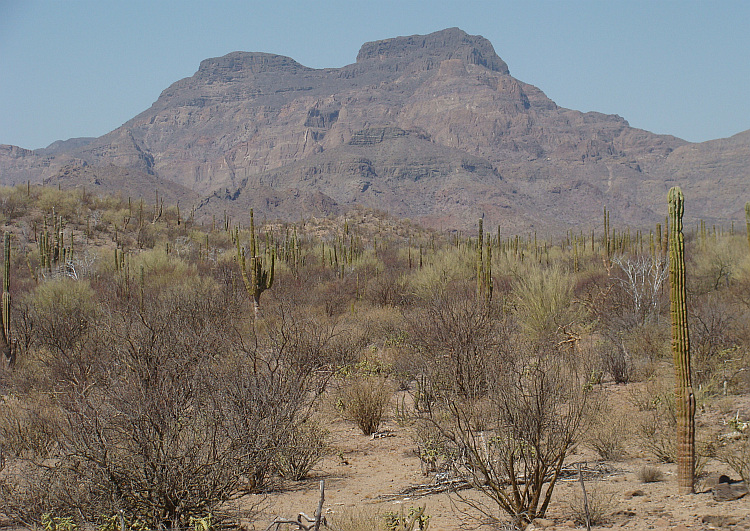


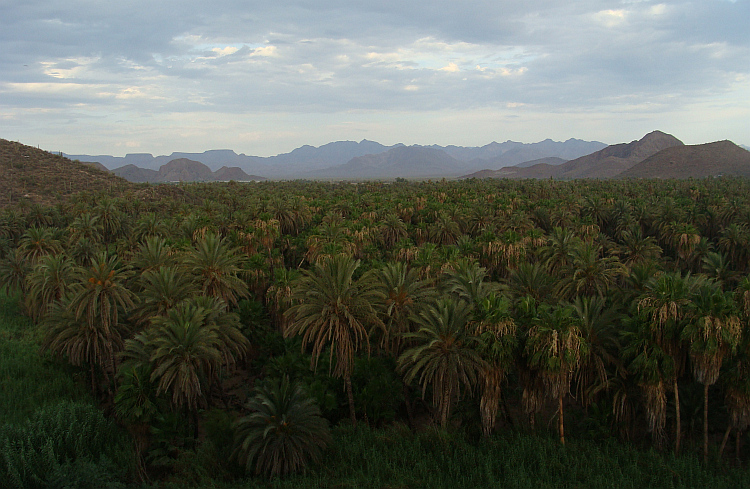
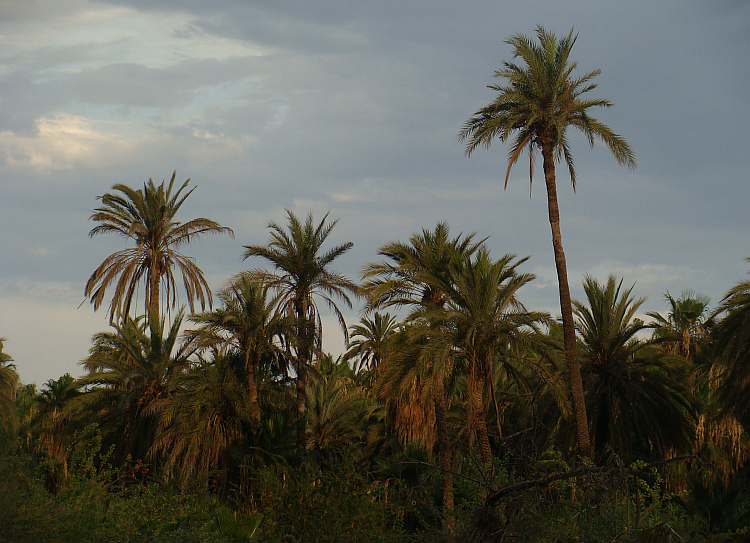
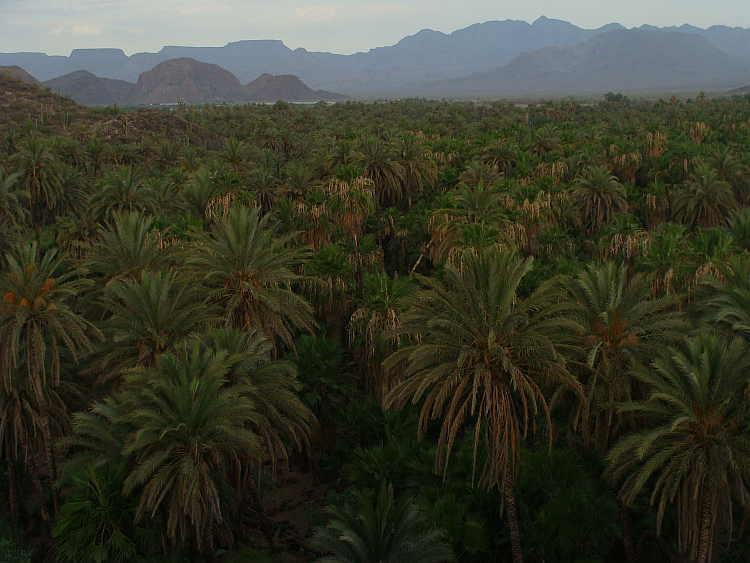
 On the way from Mulegé to Santa Rosalía I had despite the extreme heat
of fifty degrees in the shade for the first day in a long time no punctures.
Slowly my confidence in the tire started to increase again. I was also
content with the fact that the glue of the bike shop from Loreto appeared to
work fine.
On the way from Mulegé to Santa Rosalía I had despite the extreme heat
of fifty degrees in the shade for the first day in a long time no punctures.
Slowly my confidence in the tire started to increase again. I was also
content with the fact that the glue of the bike shop from Loreto appeared to
work fine.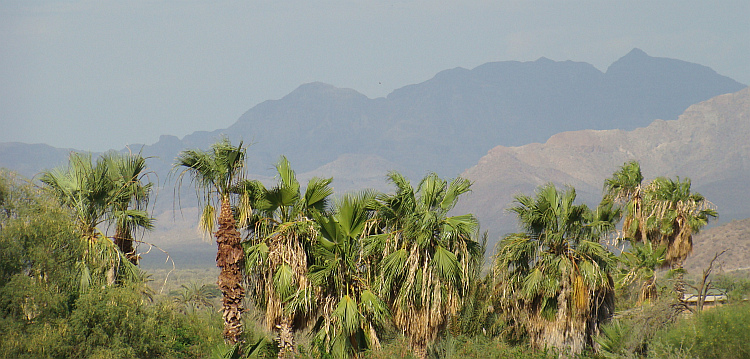
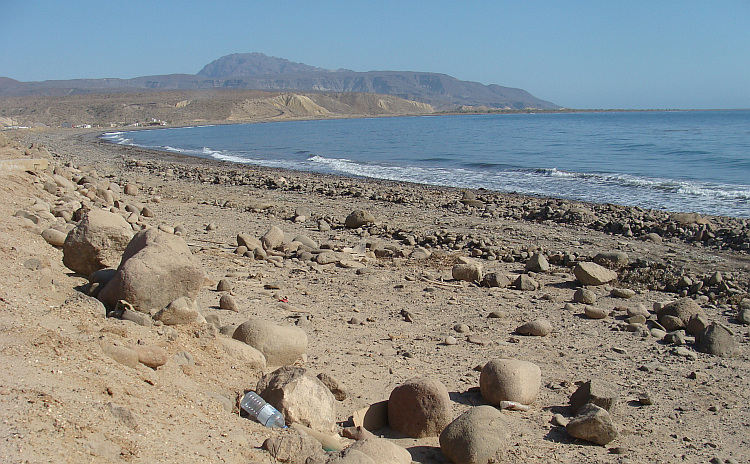

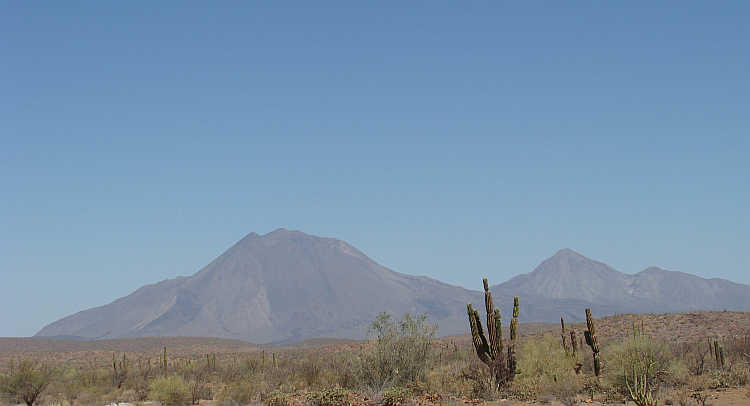
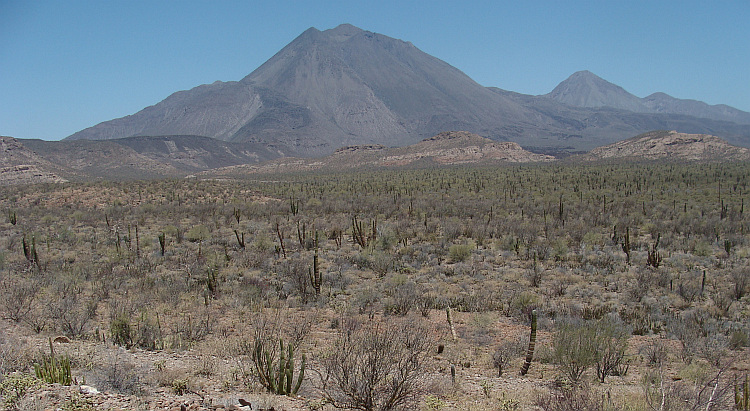
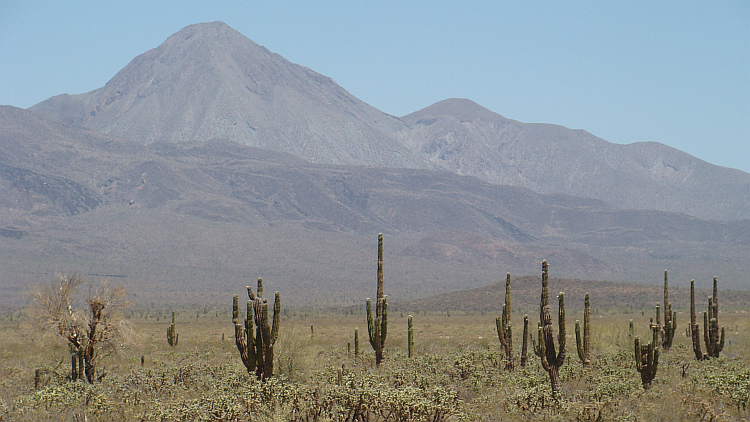
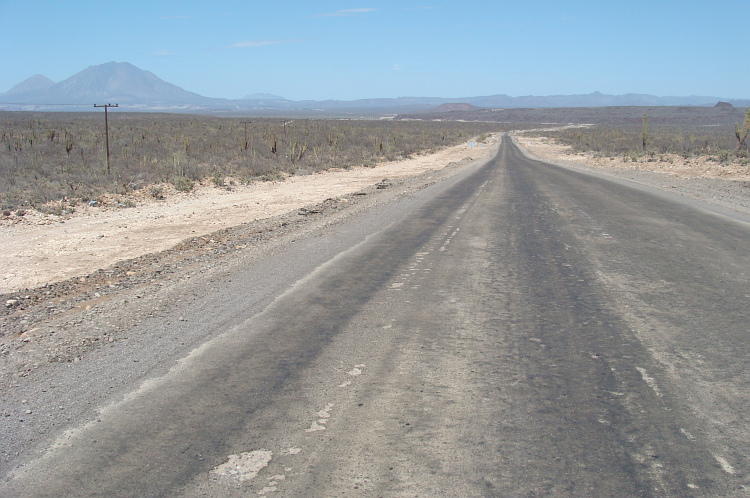
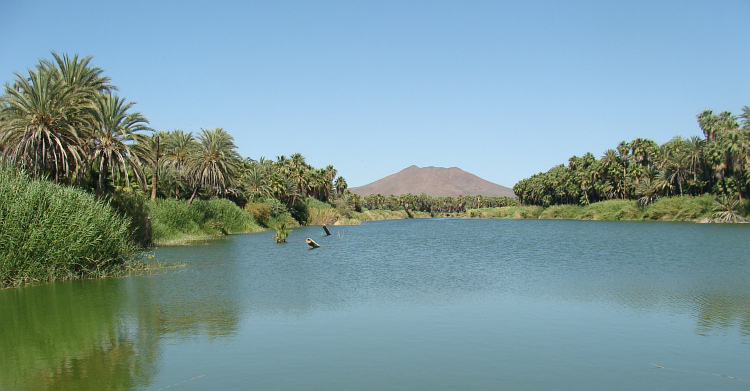
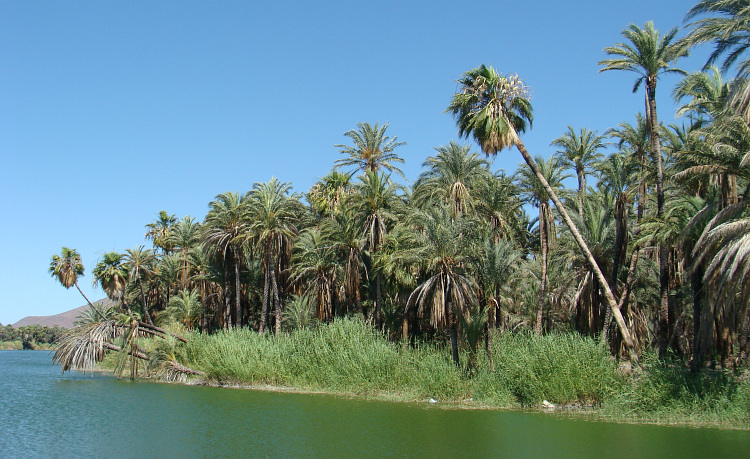
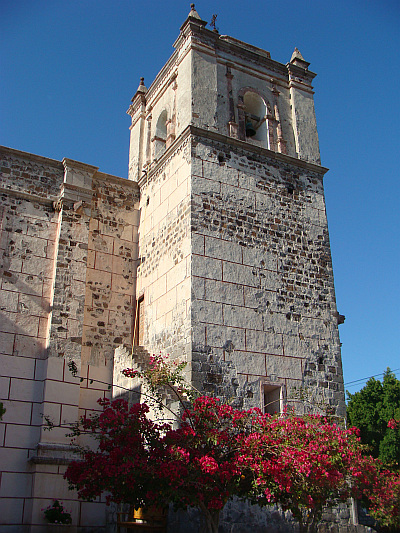 And so I suddenly stood on the edge of the Latin American world. In the
city that had grown in forty years from a tiny settlement to a city of
two million inhabitants. In the city with the mostly crossed border in the
world. The city where thousands of Americans from San Diego or Los Angeles per
day come to visit to gamble, drink or for paid sex. The main street,
the Revolución or the Revo, and its side streets were a neon feast of
tequila bars, nightclubs, brothels and hotels with hourly rate. Before most of
the amusements and souvenir shops a large man was stationed with a promotional
task:
And so I suddenly stood on the edge of the Latin American world. In the
city that had grown in forty years from a tiny settlement to a city of
two million inhabitants. In the city with the mostly crossed border in the
world. The city where thousands of Americans from San Diego or Los Angeles per
day come to visit to gamble, drink or for paid sex. The main street,
the Revolución or the Revo, and its side streets were a neon feast of
tequila bars, nightclubs, brothels and hotels with hourly rate. Before most of
the amusements and souvenir shops a large man was stationed with a promotional
task:
"Hey come inside, cheap souvenirs."
"I do not need any souvenirs Bye..."
"Looking is free."
"But I do not want. See you..."
"It's free man, won't you Goddamn come take a look or do I have to ask again?!?"
"But I do not need anything. I told you so, didn't I?"
"I kindly ask again: do you GoddamndamnDAMNit take a look at my store??!?"
"You can ask me a thousand times if I come in, but I'm going to do have fun. And
that's what I recommend to you too: To do something fun with your life."
"Oh, bugger off, man."
"America will not seduce you with its cities and its villages. Neither will she
persuade you with her culture. America will inspire you with its landscapes."
Map of Mexico
